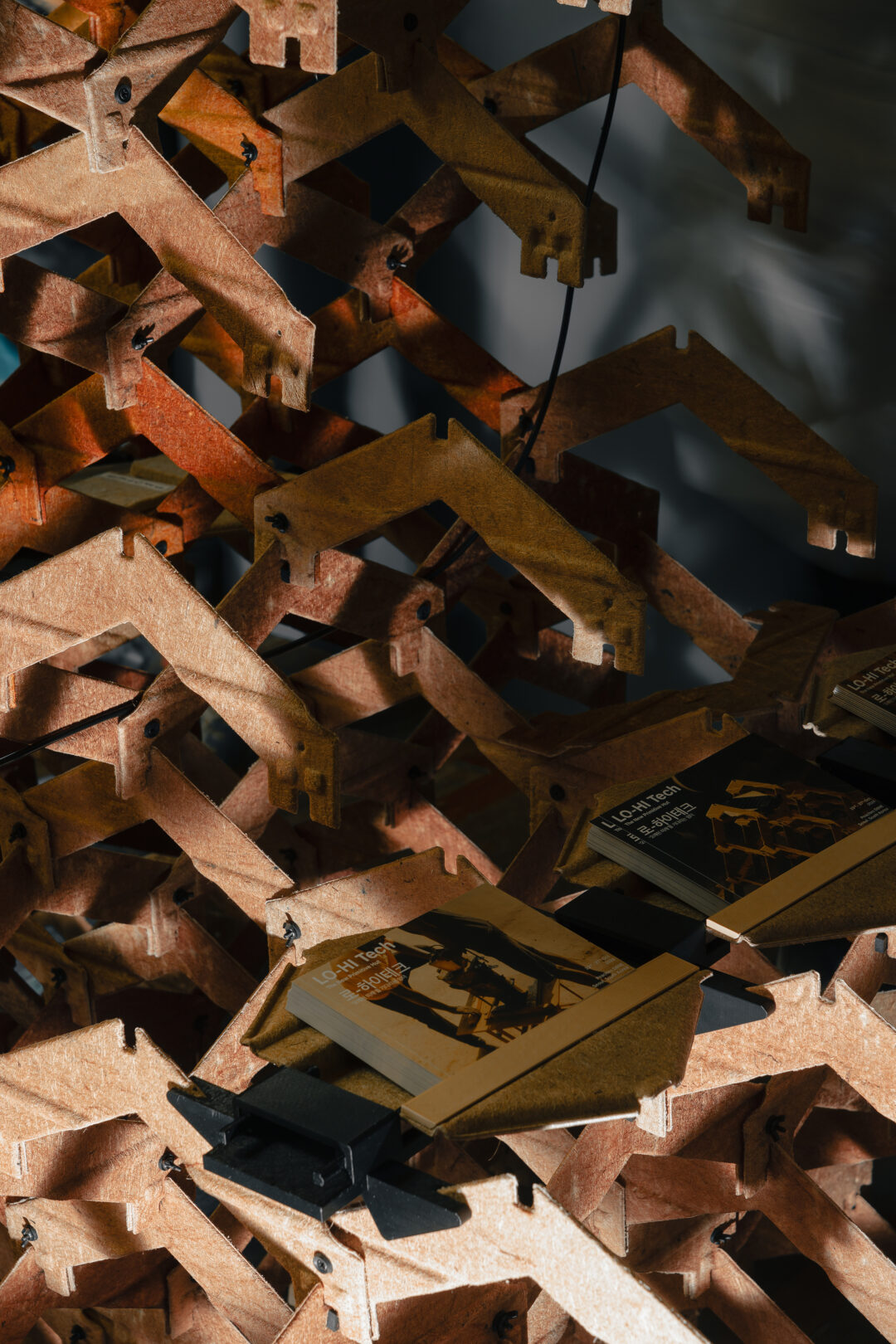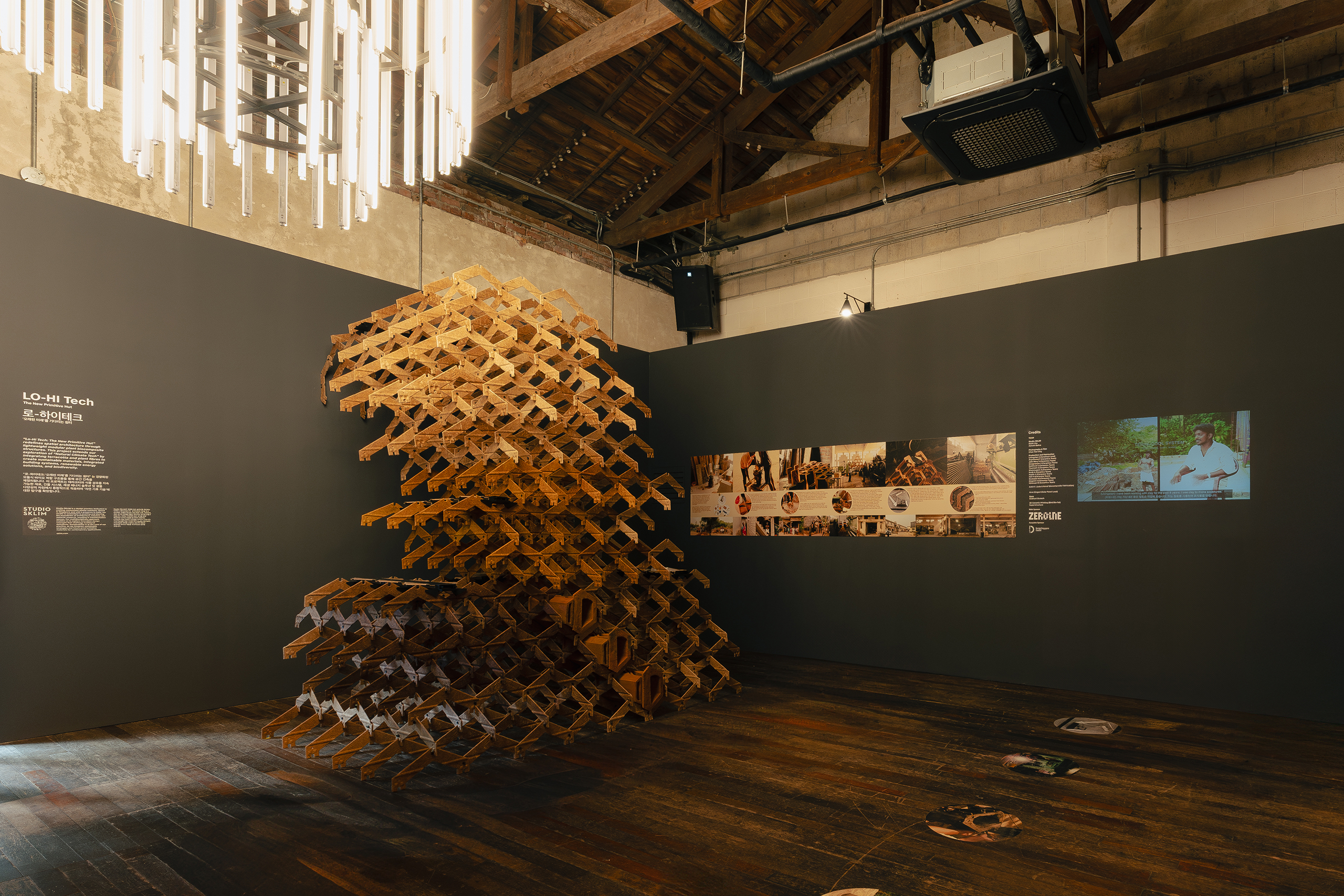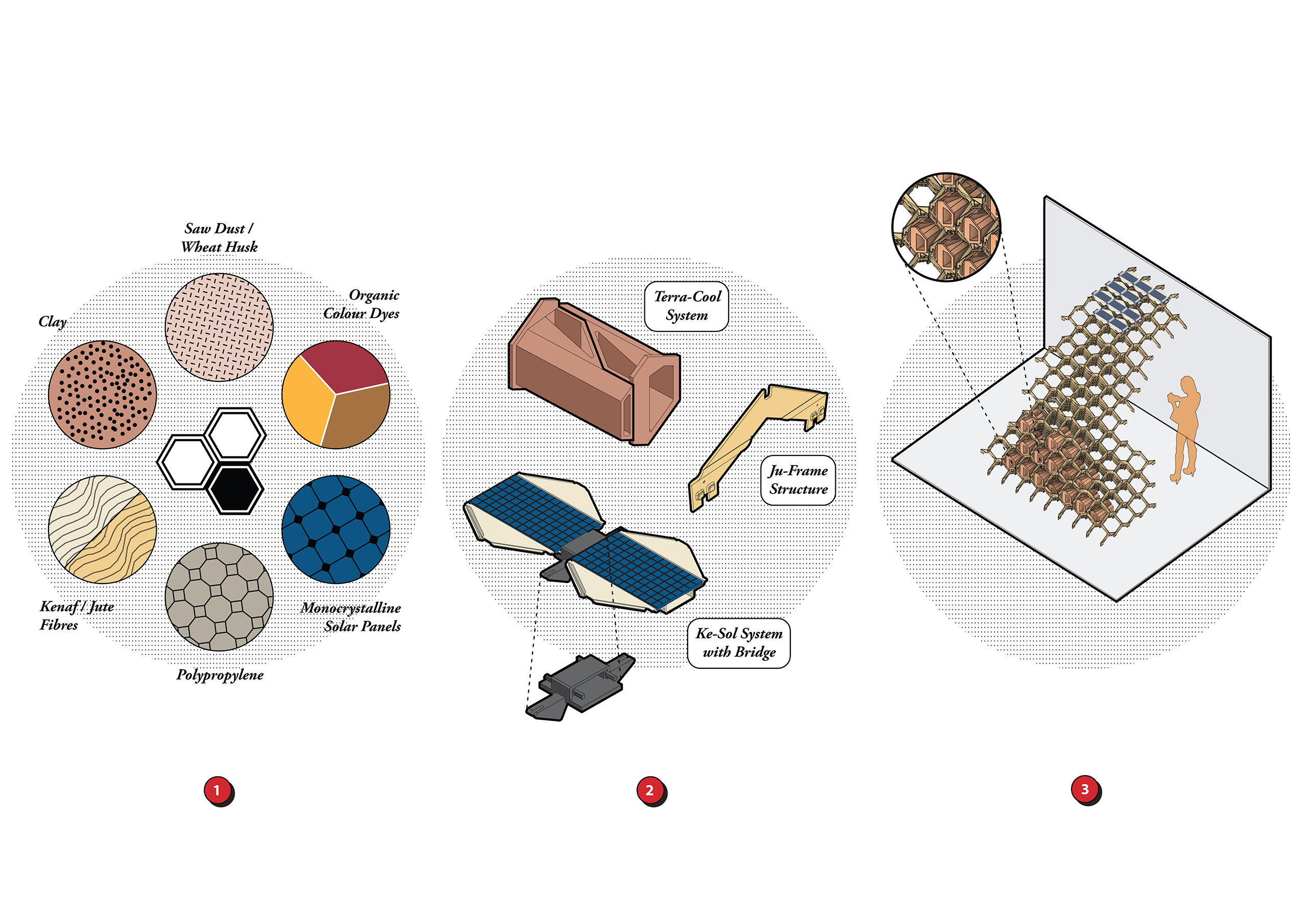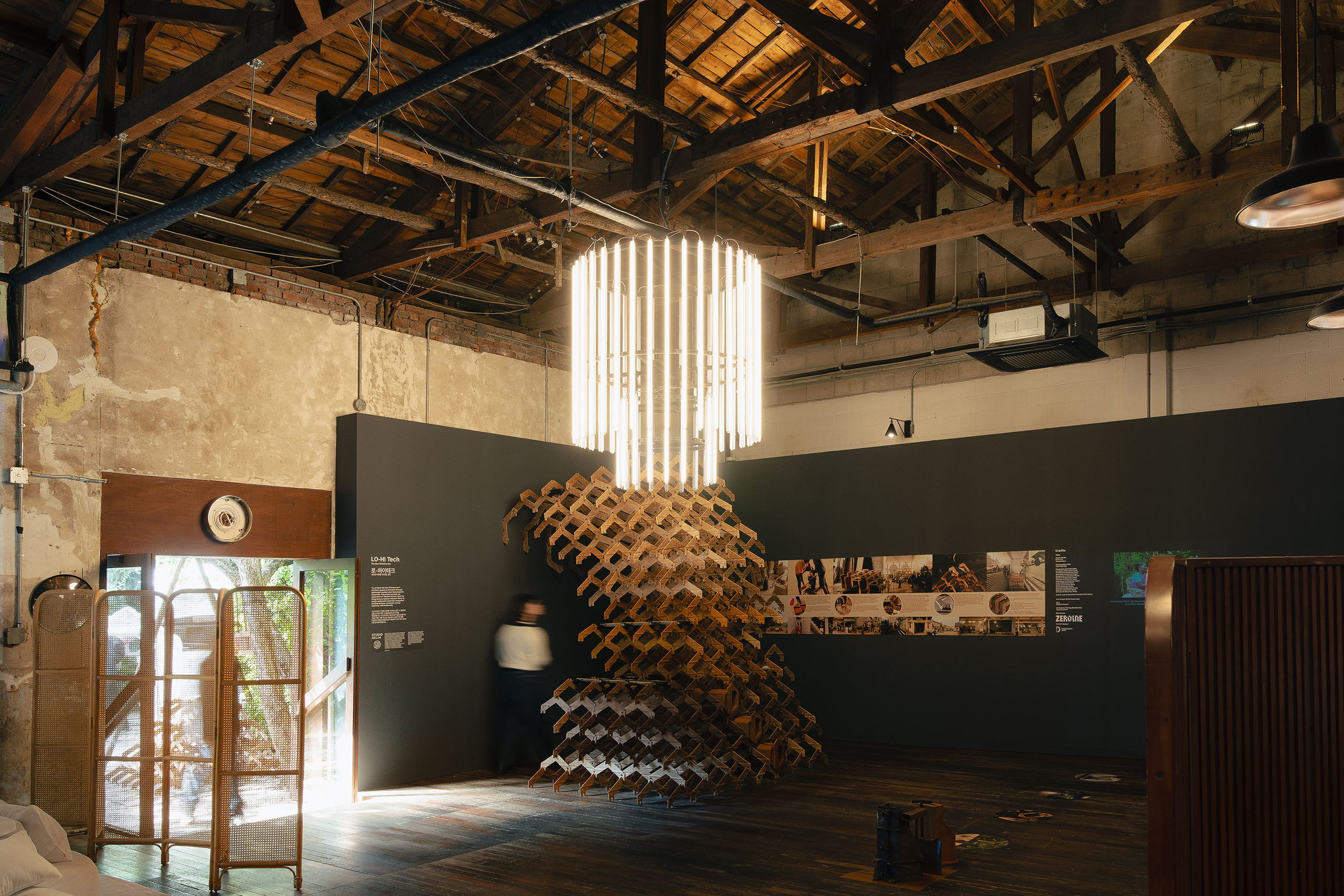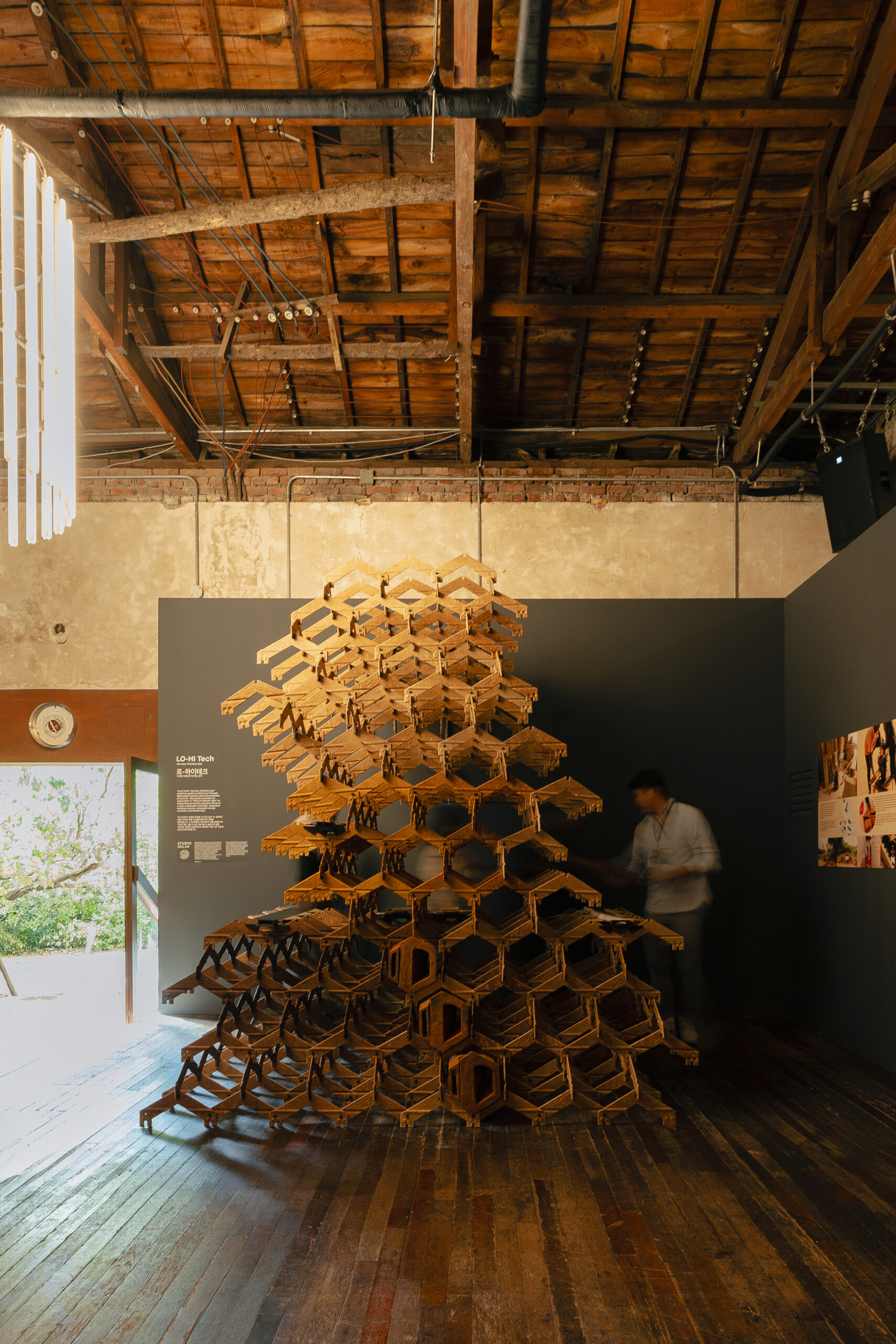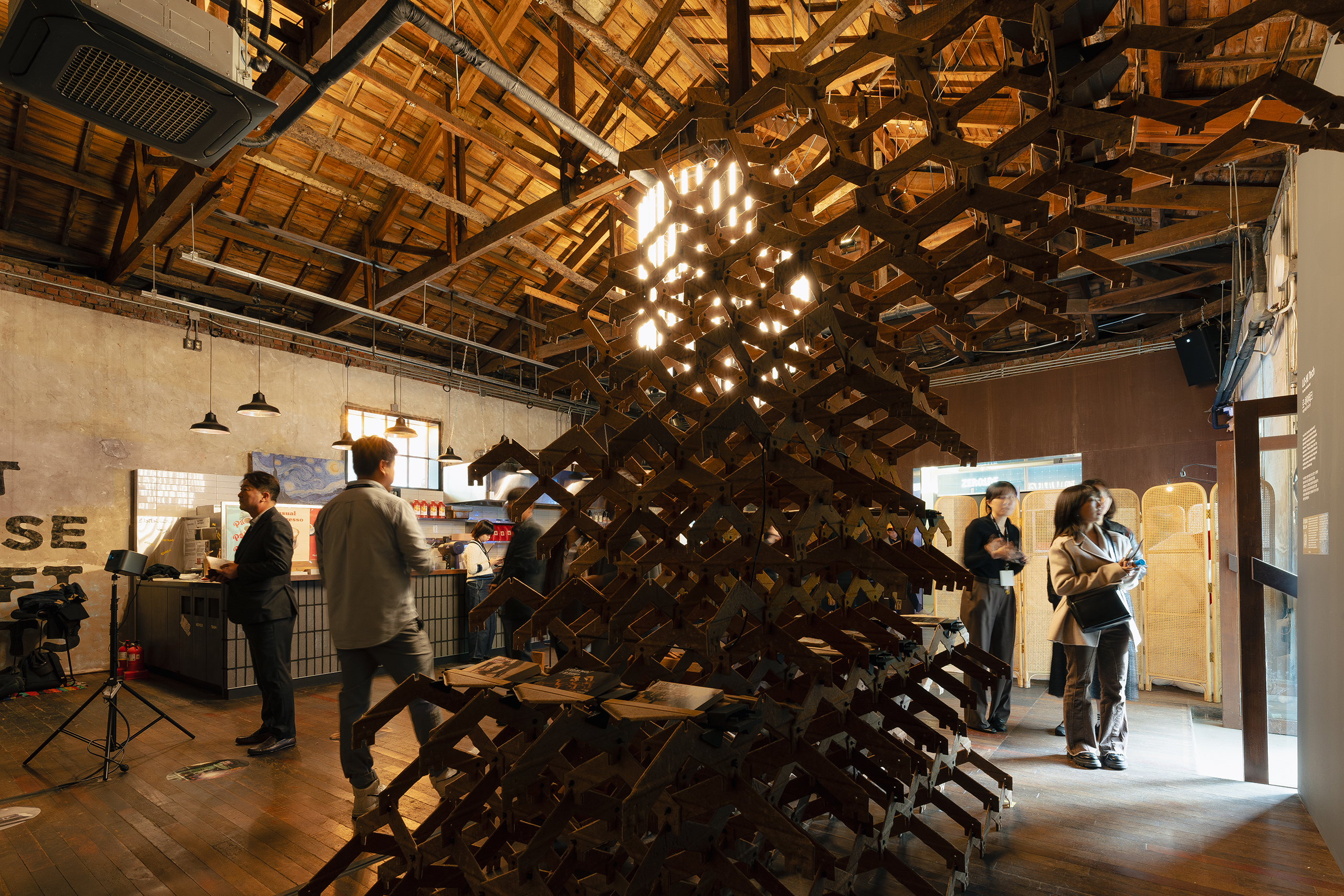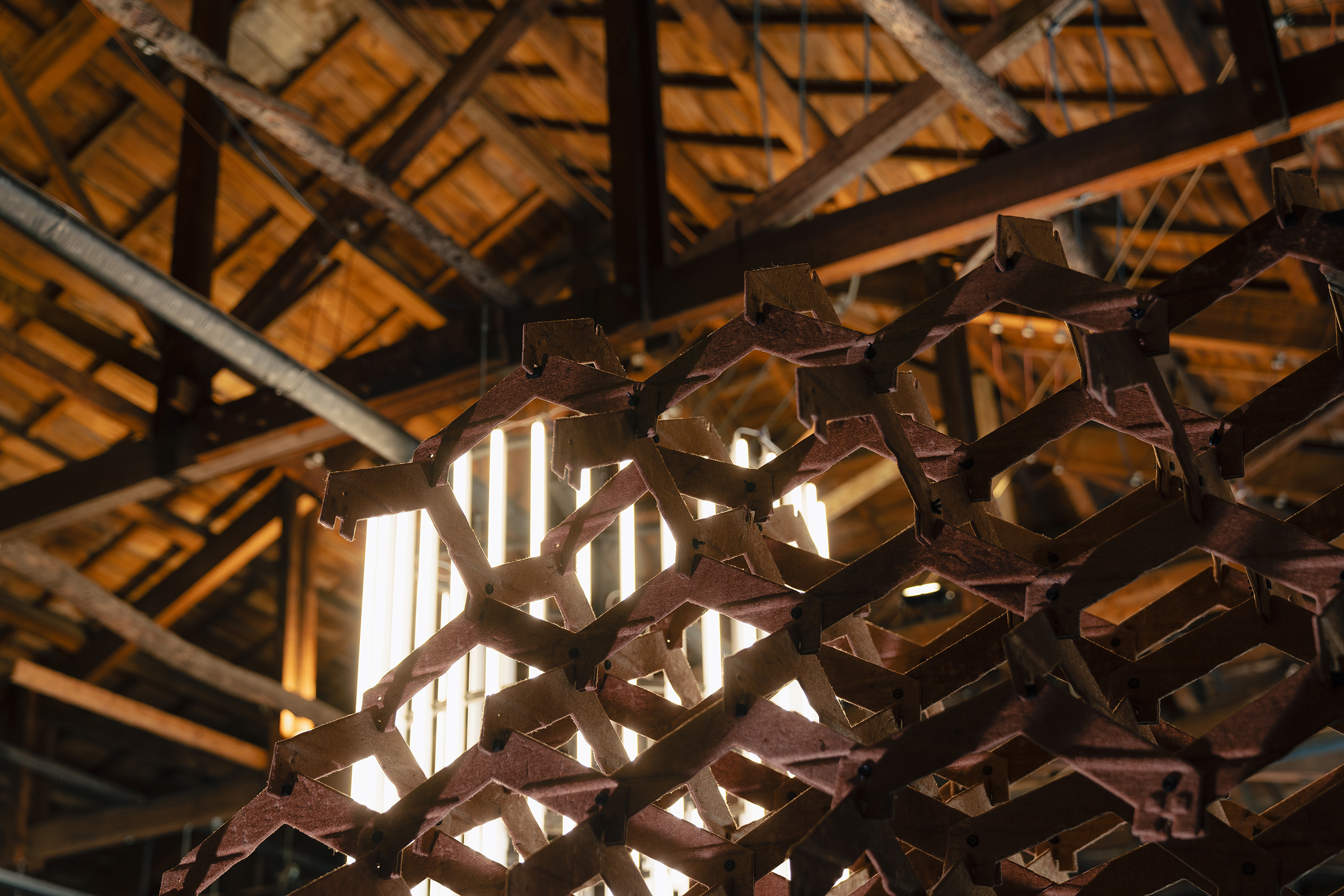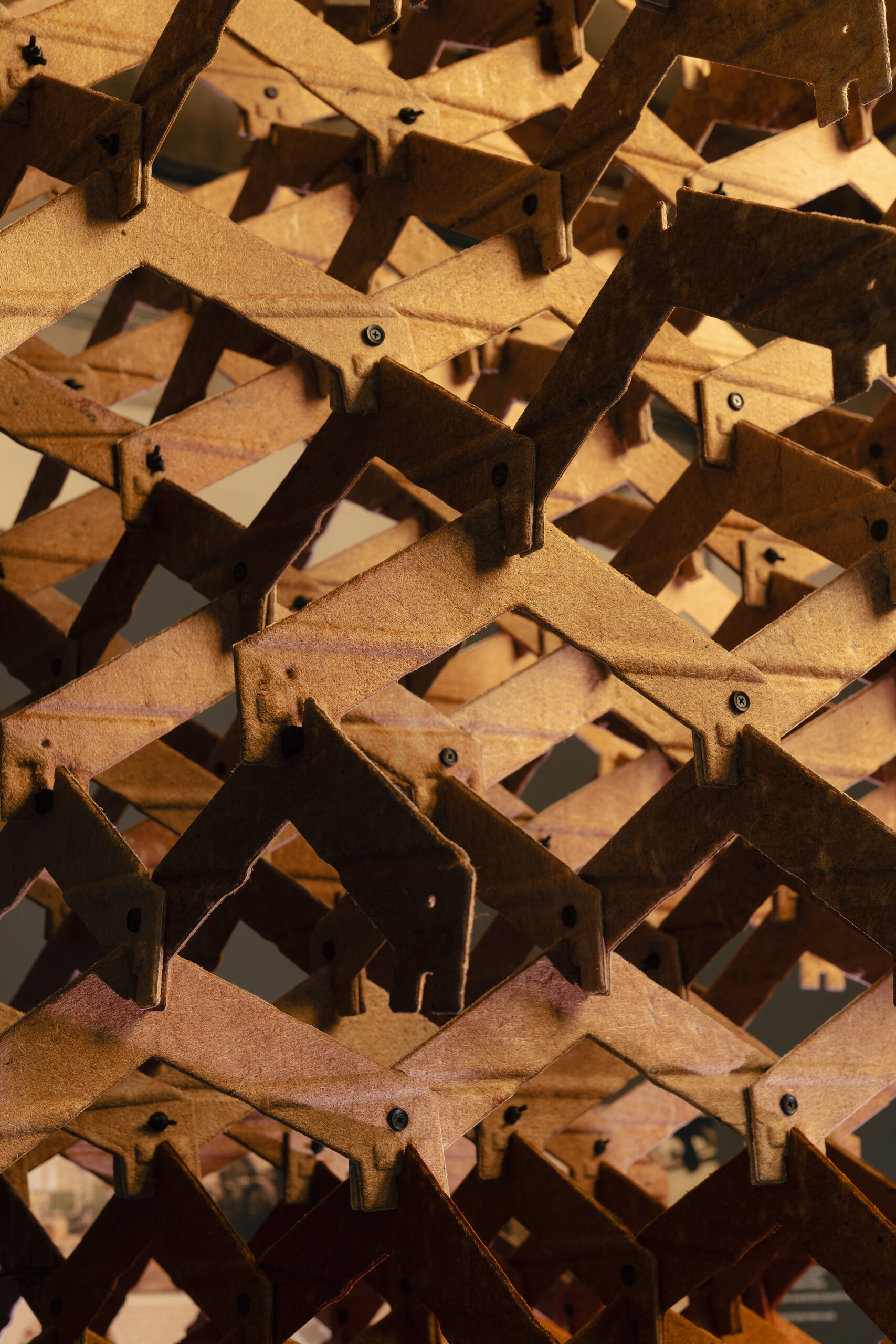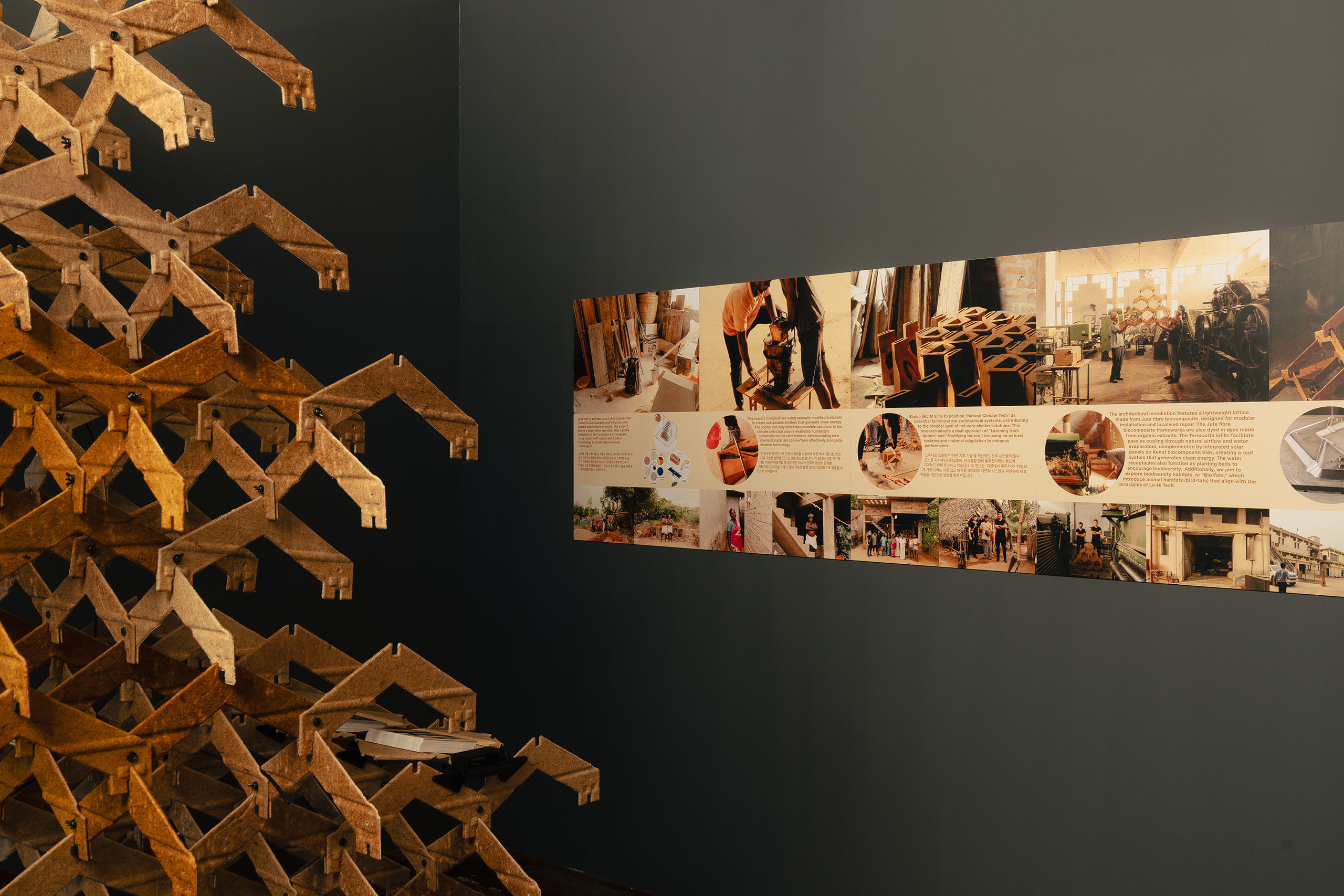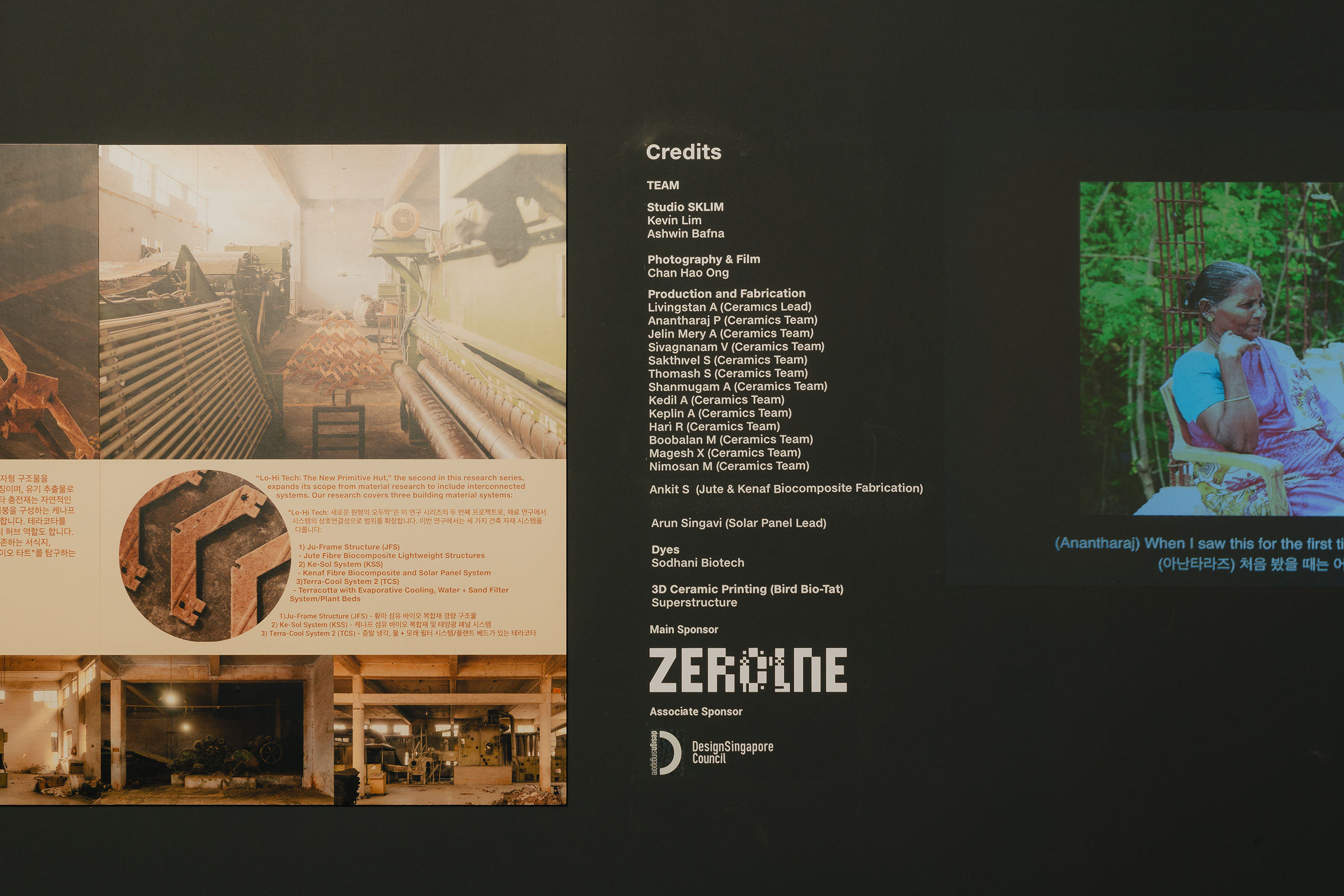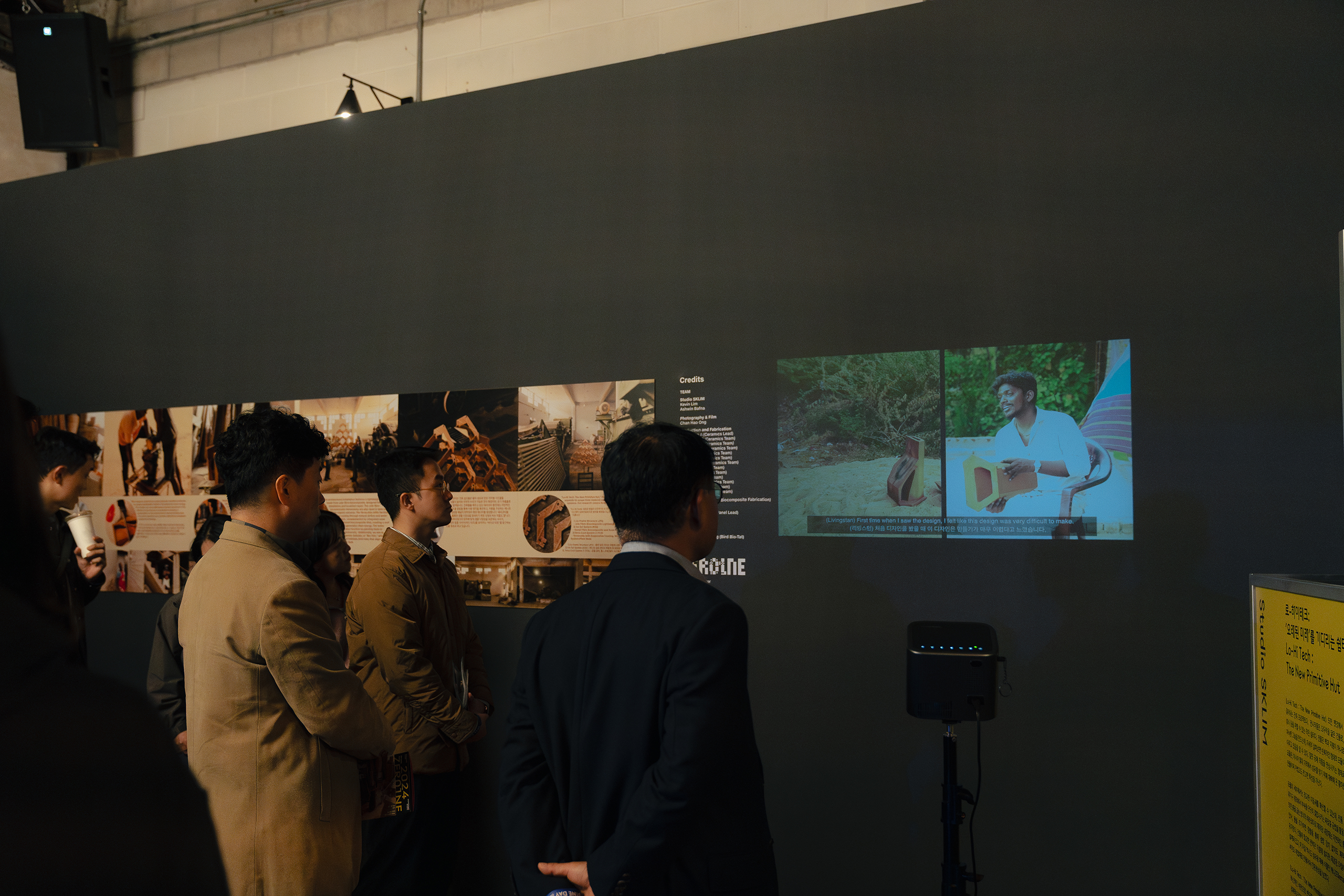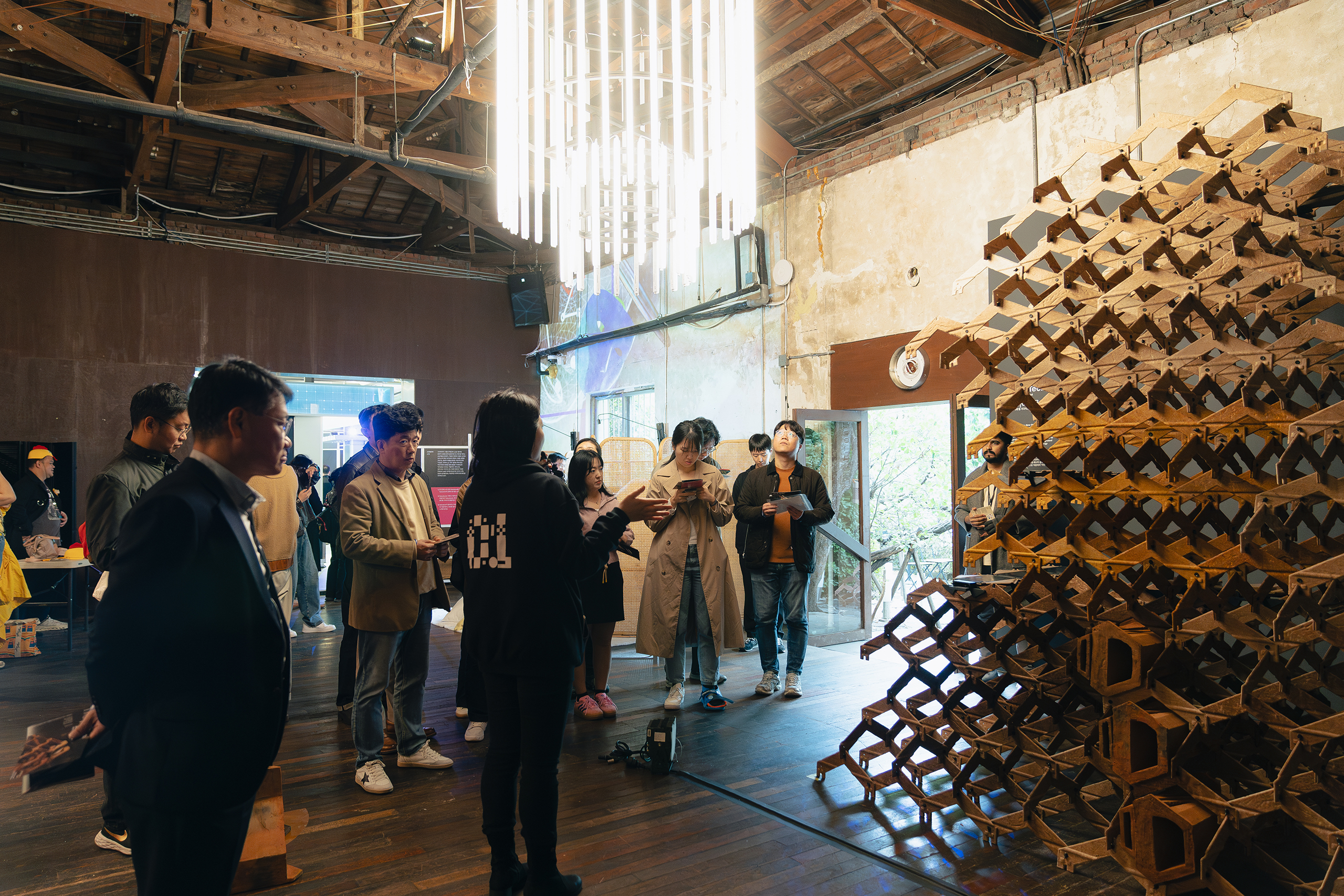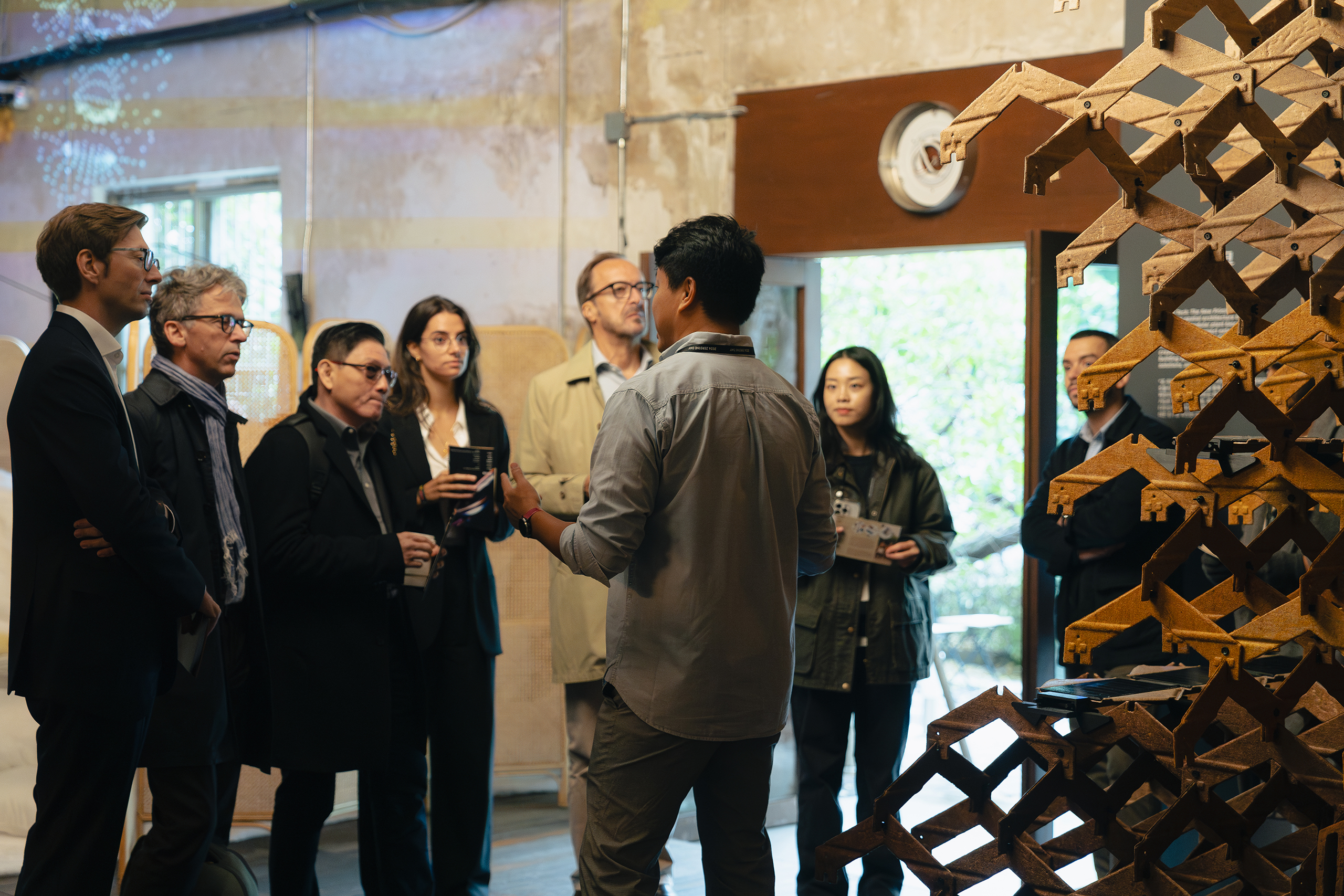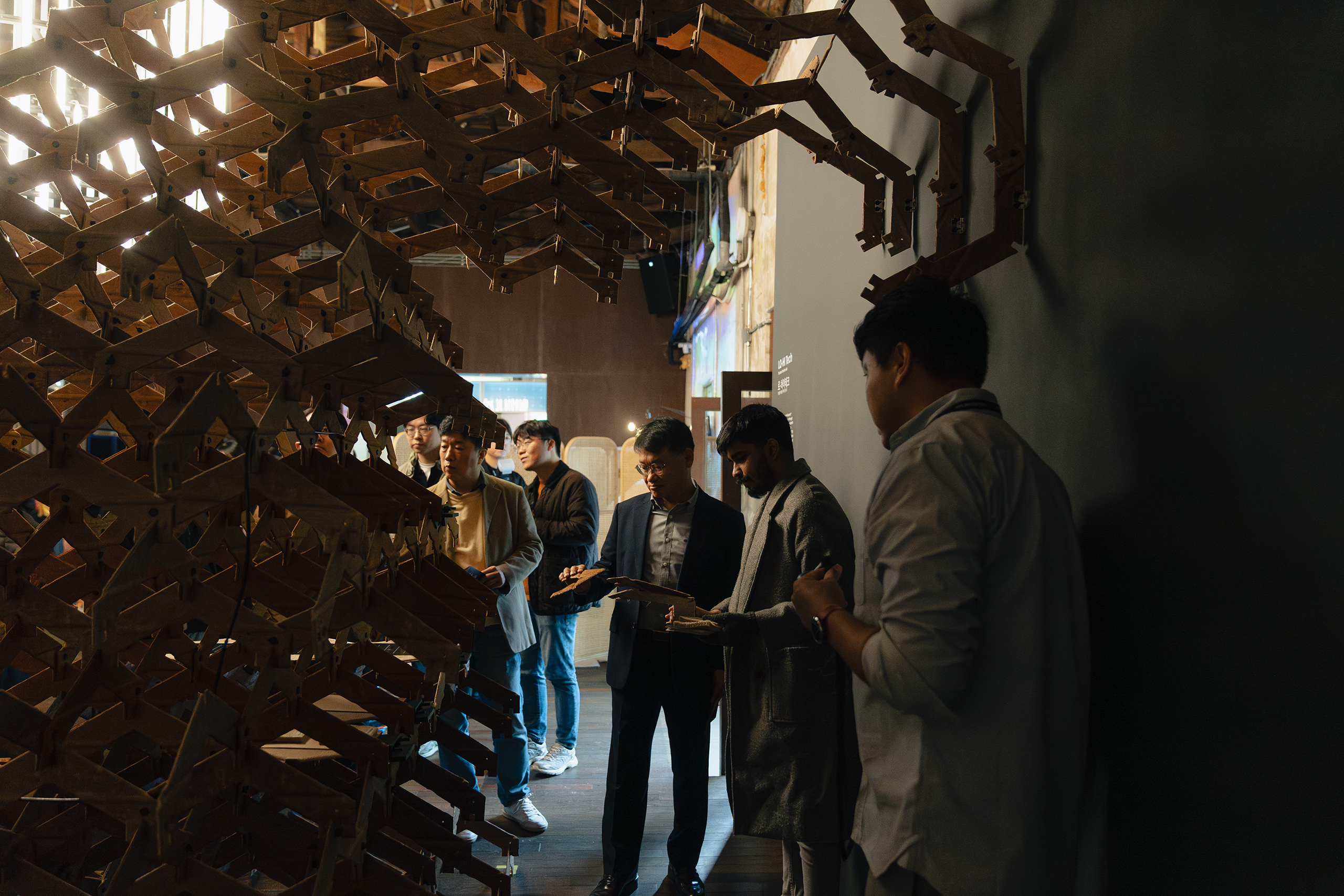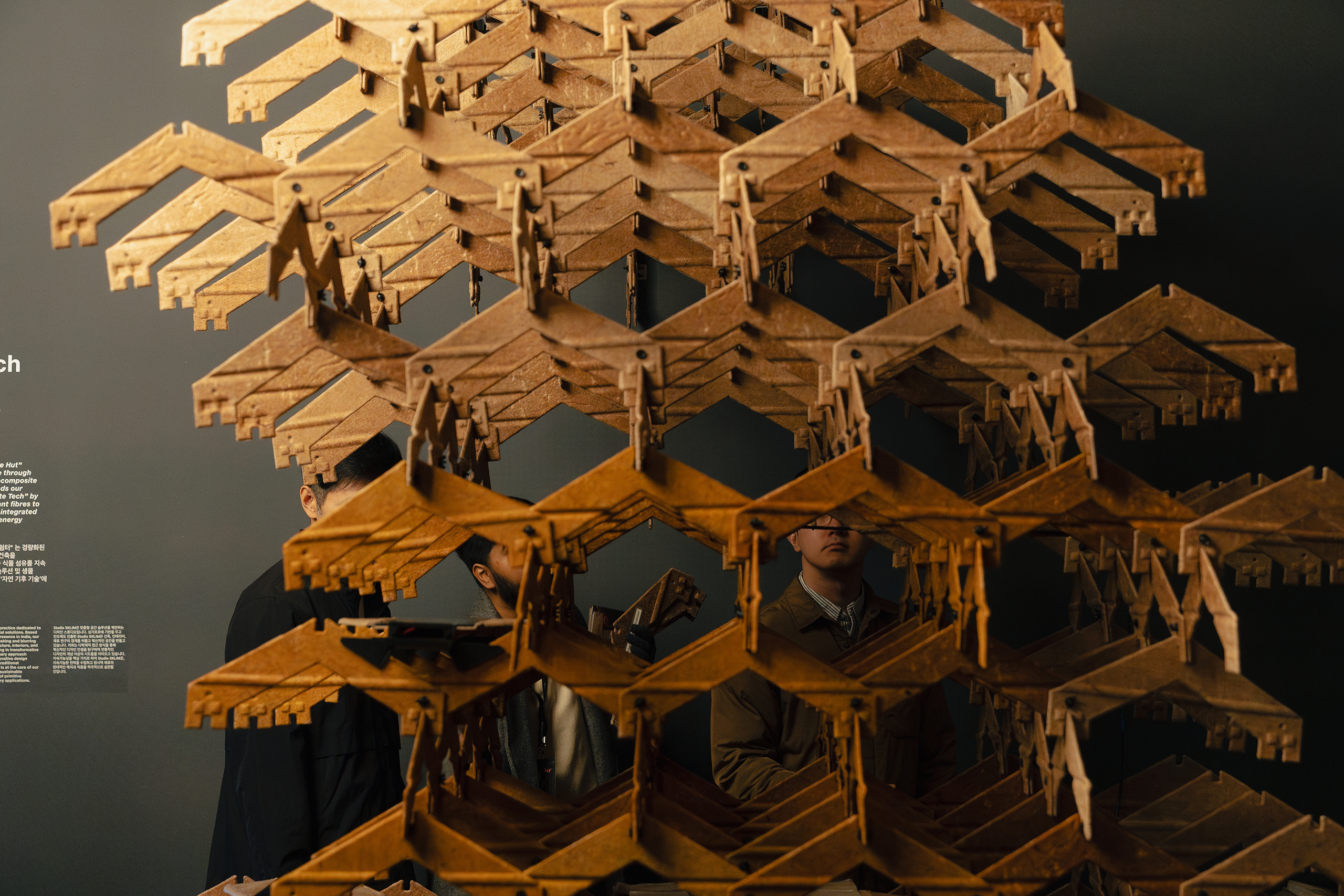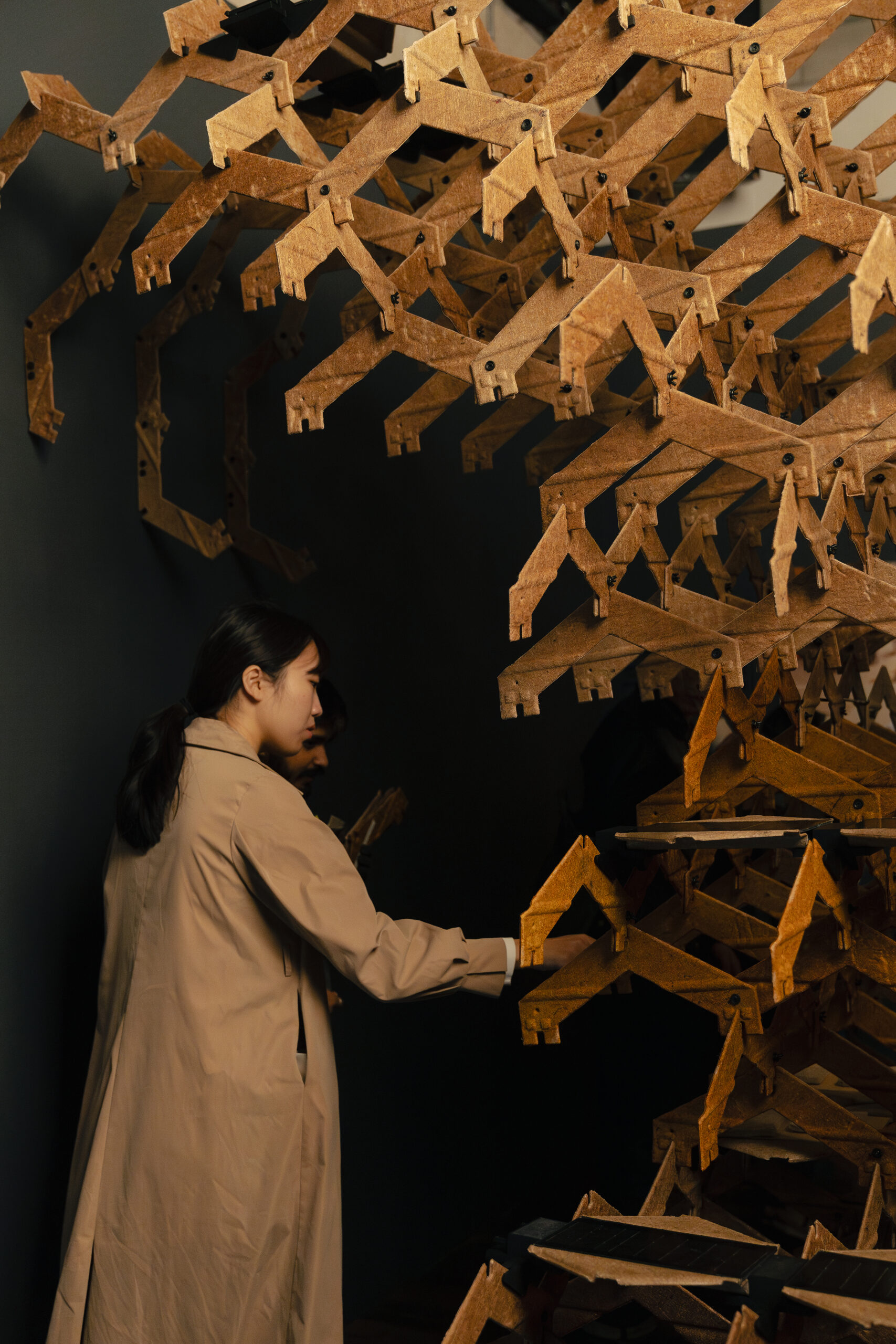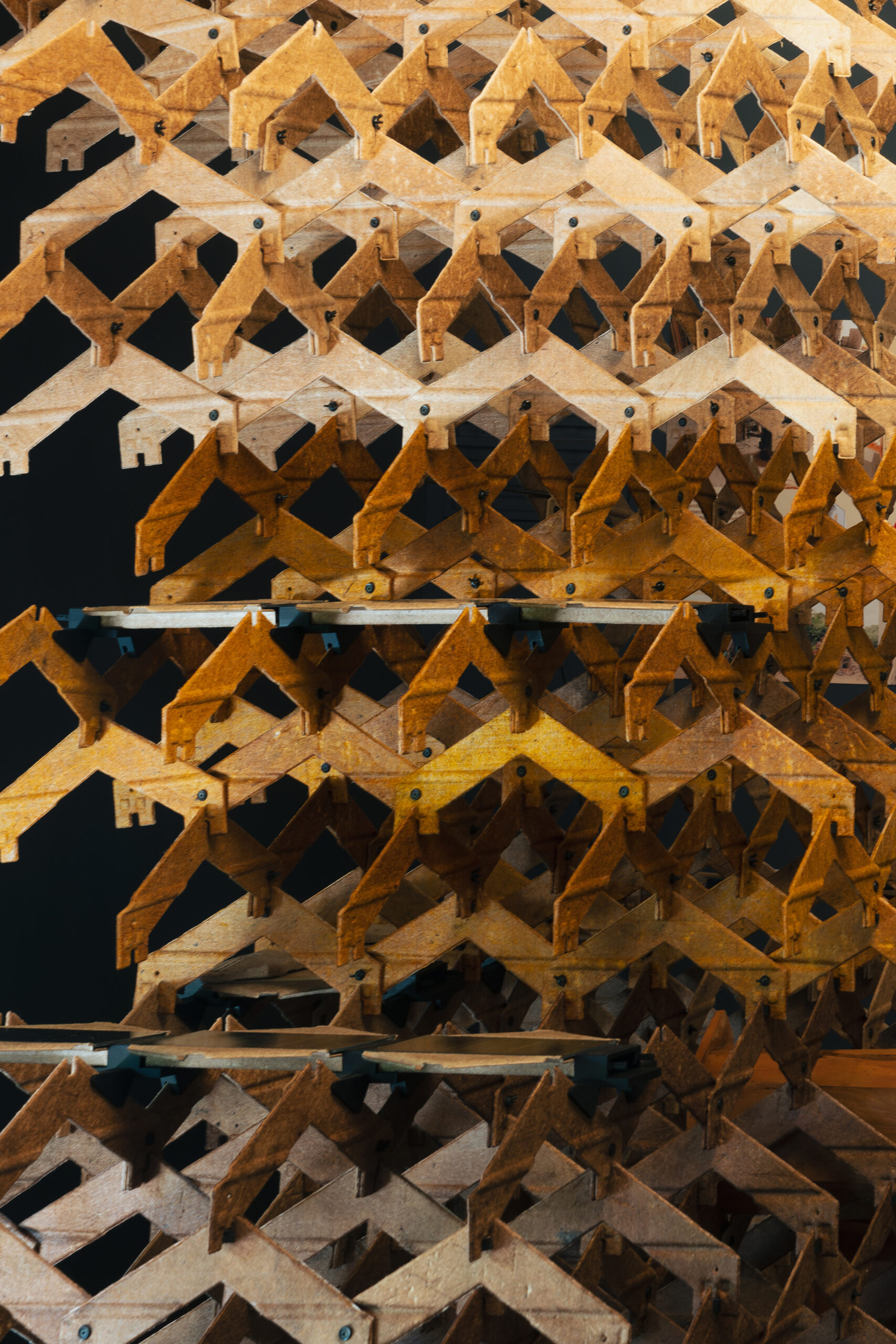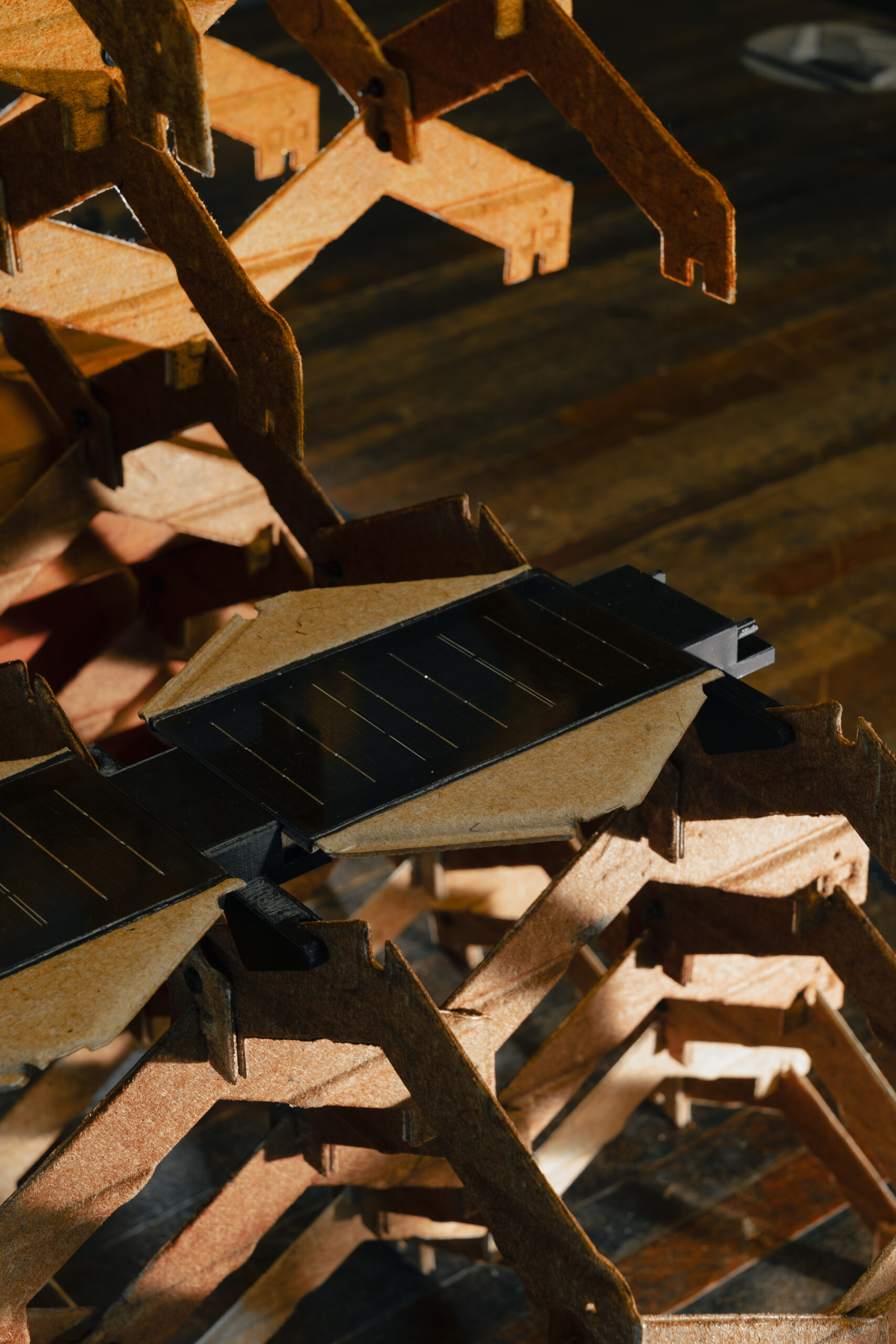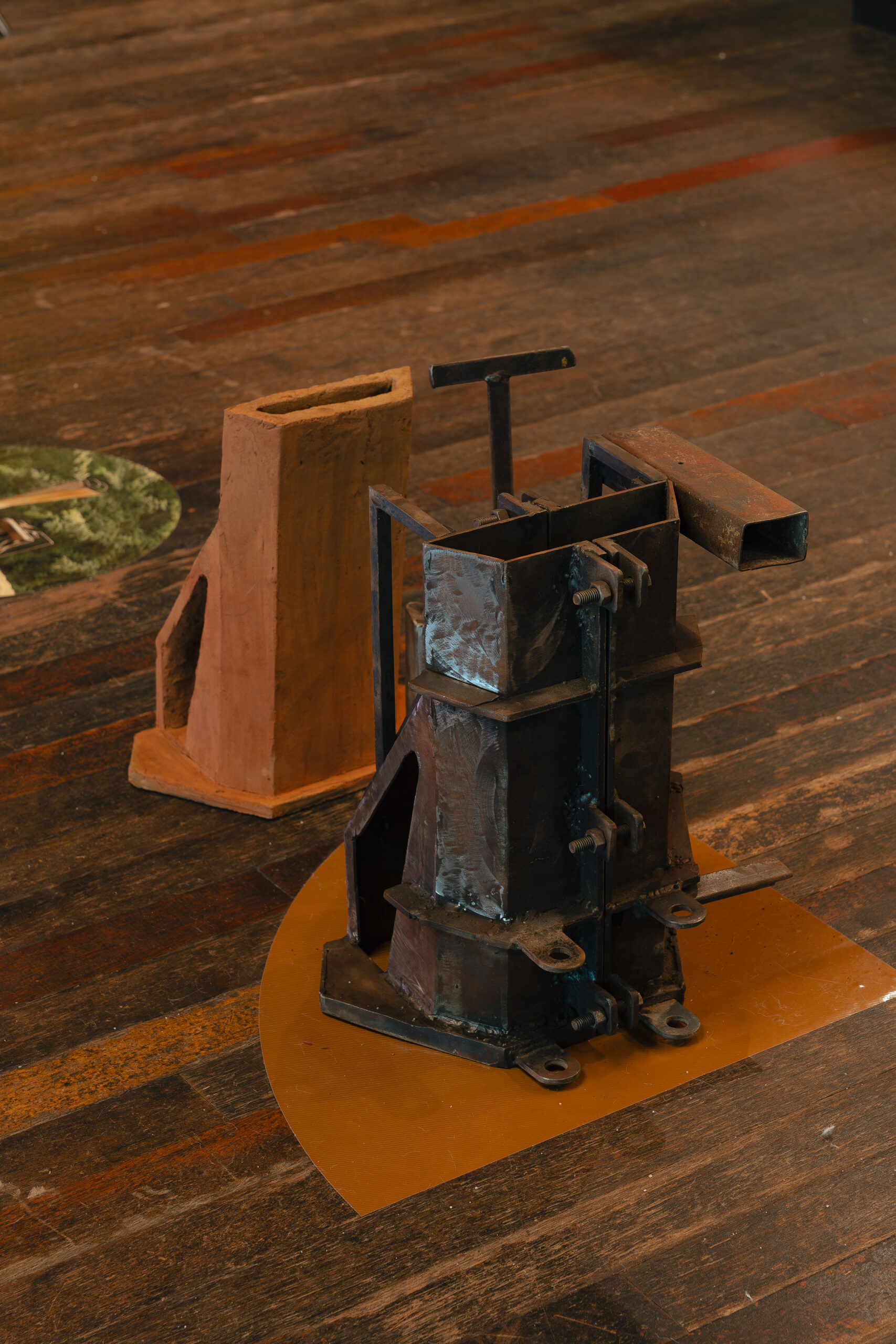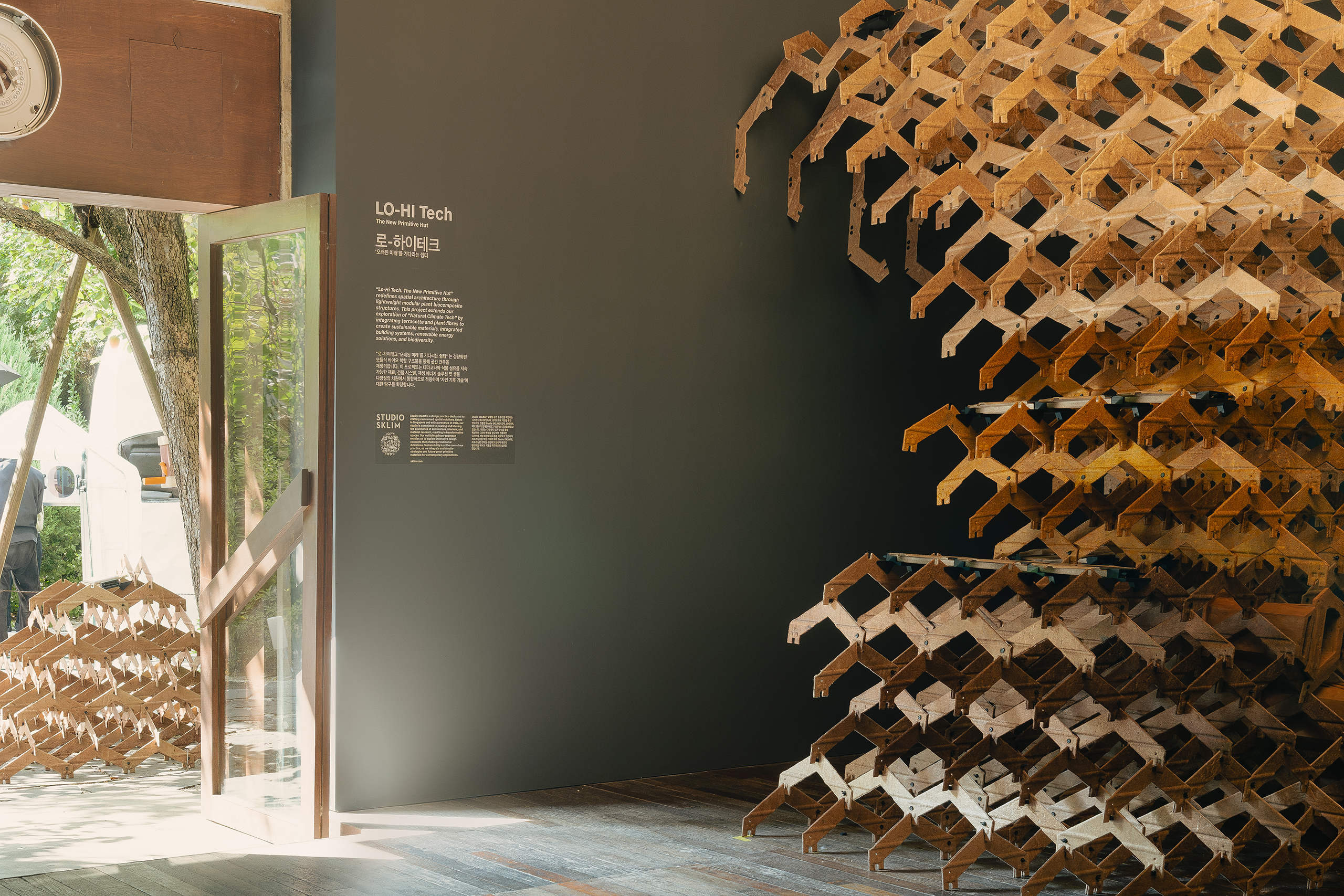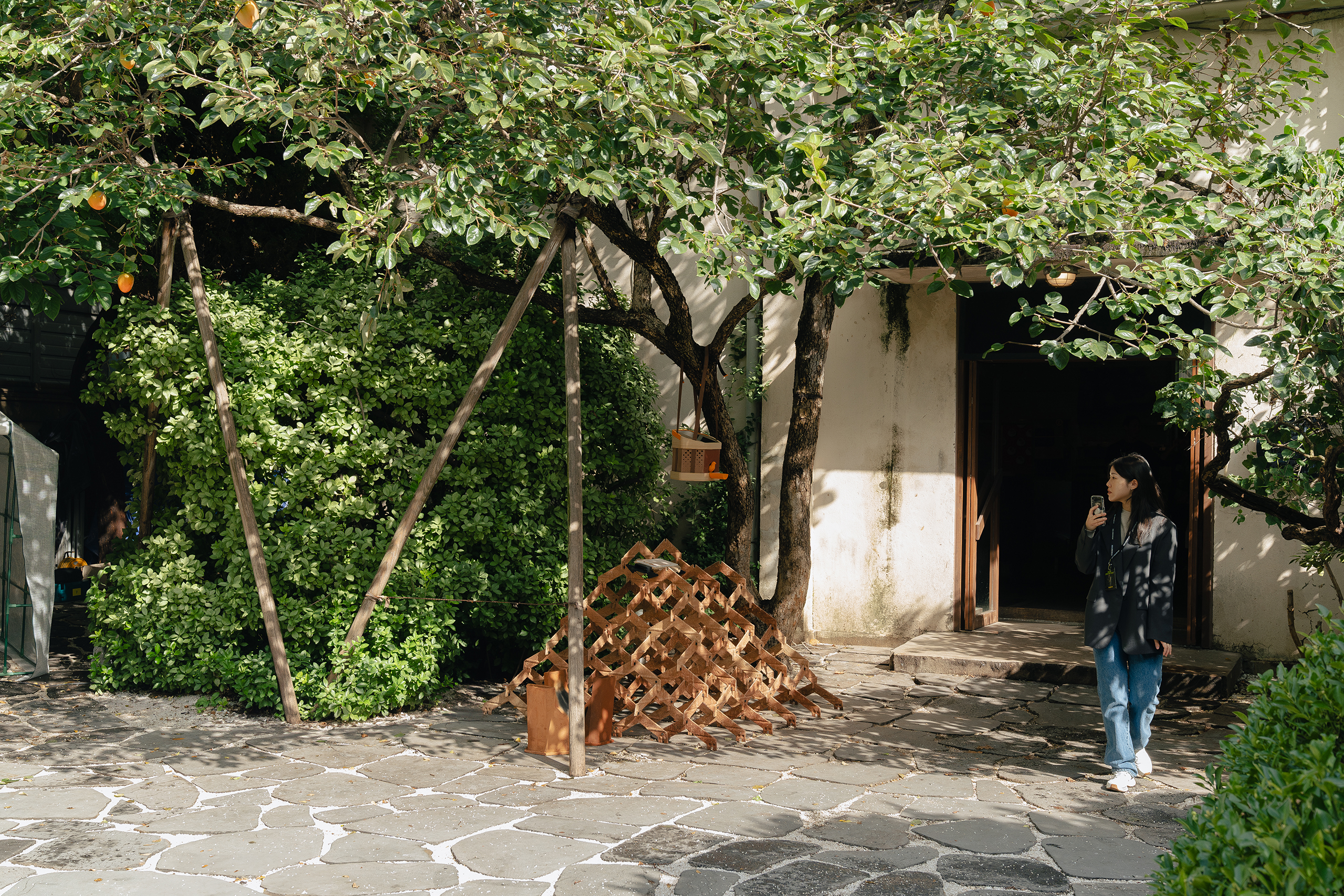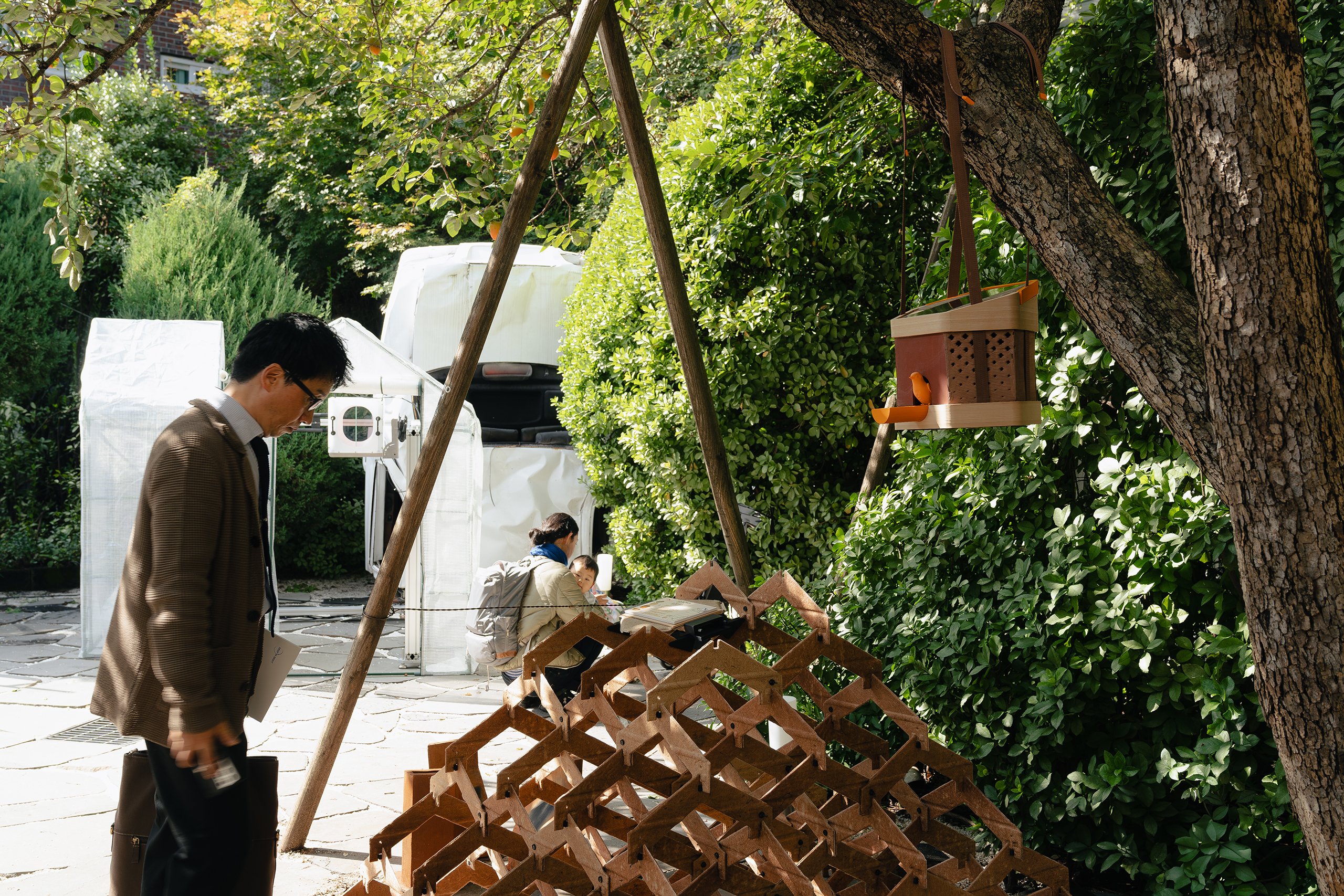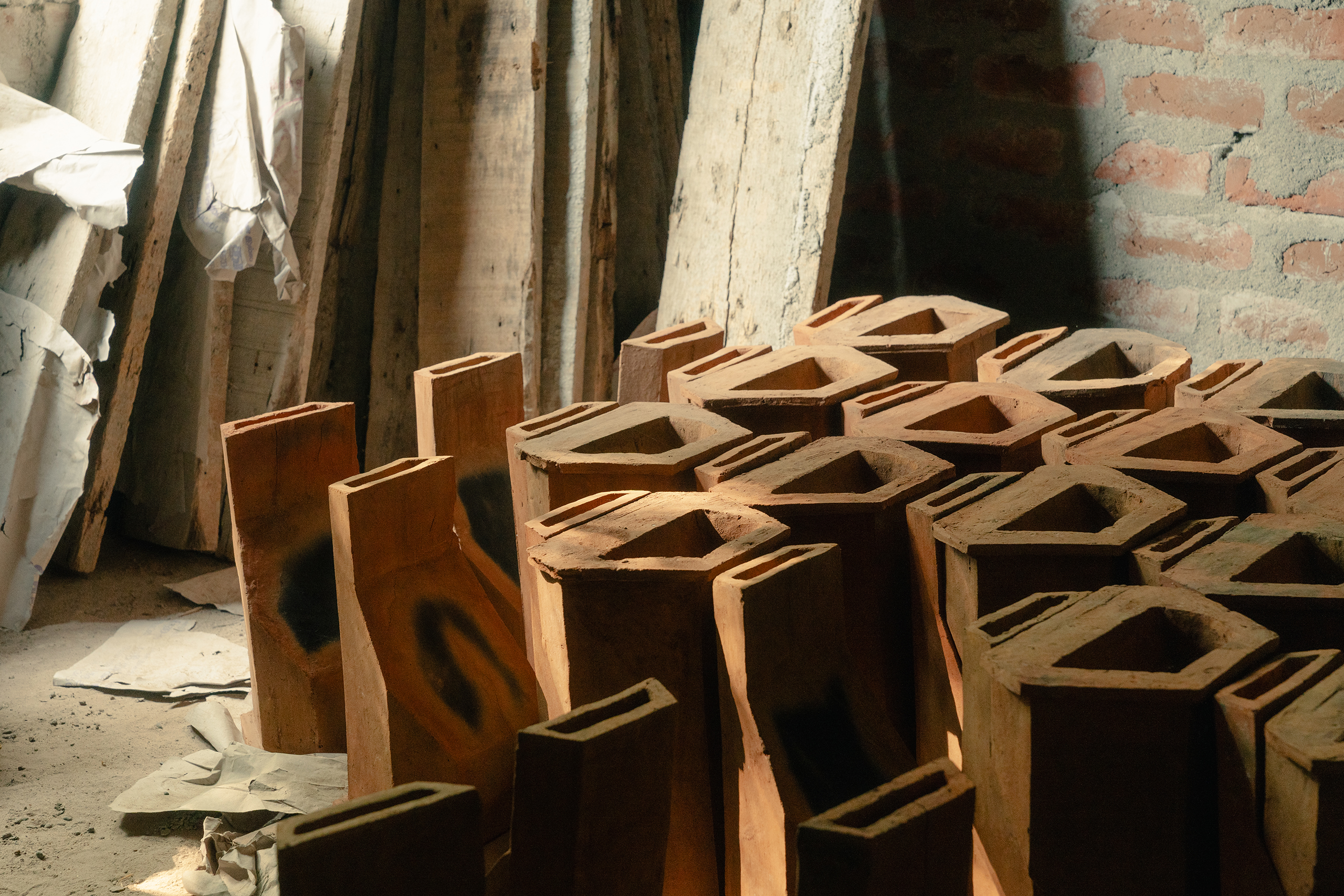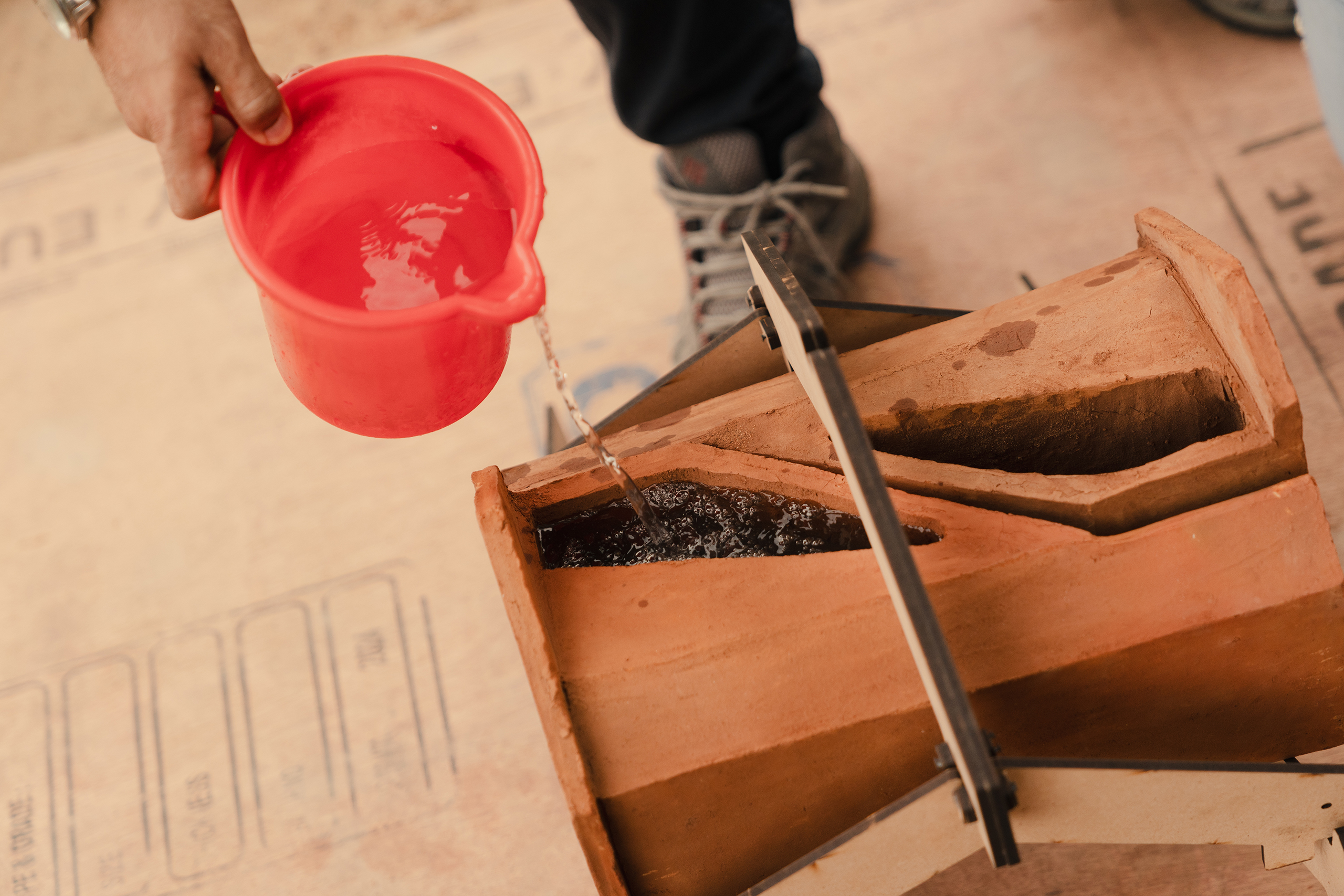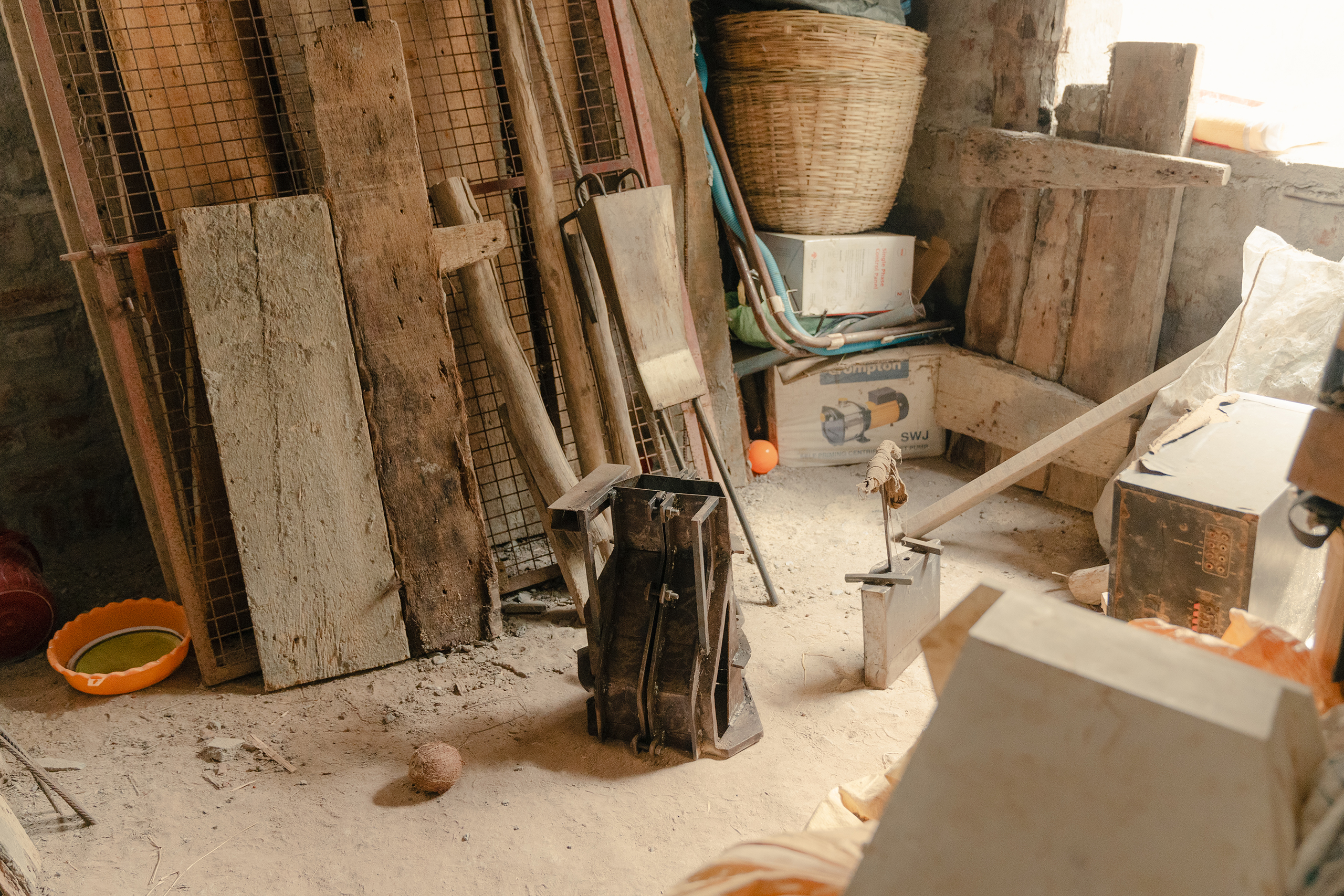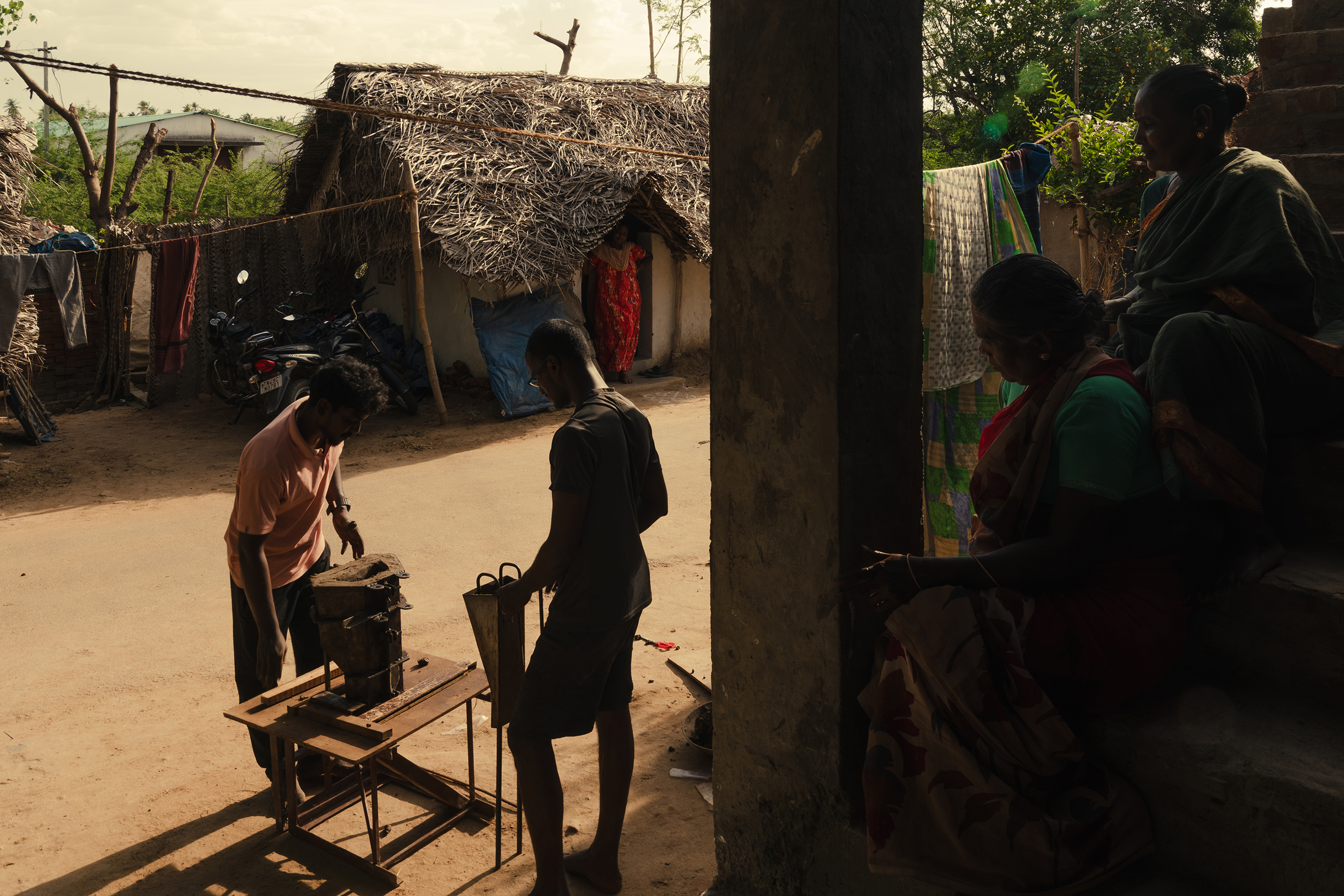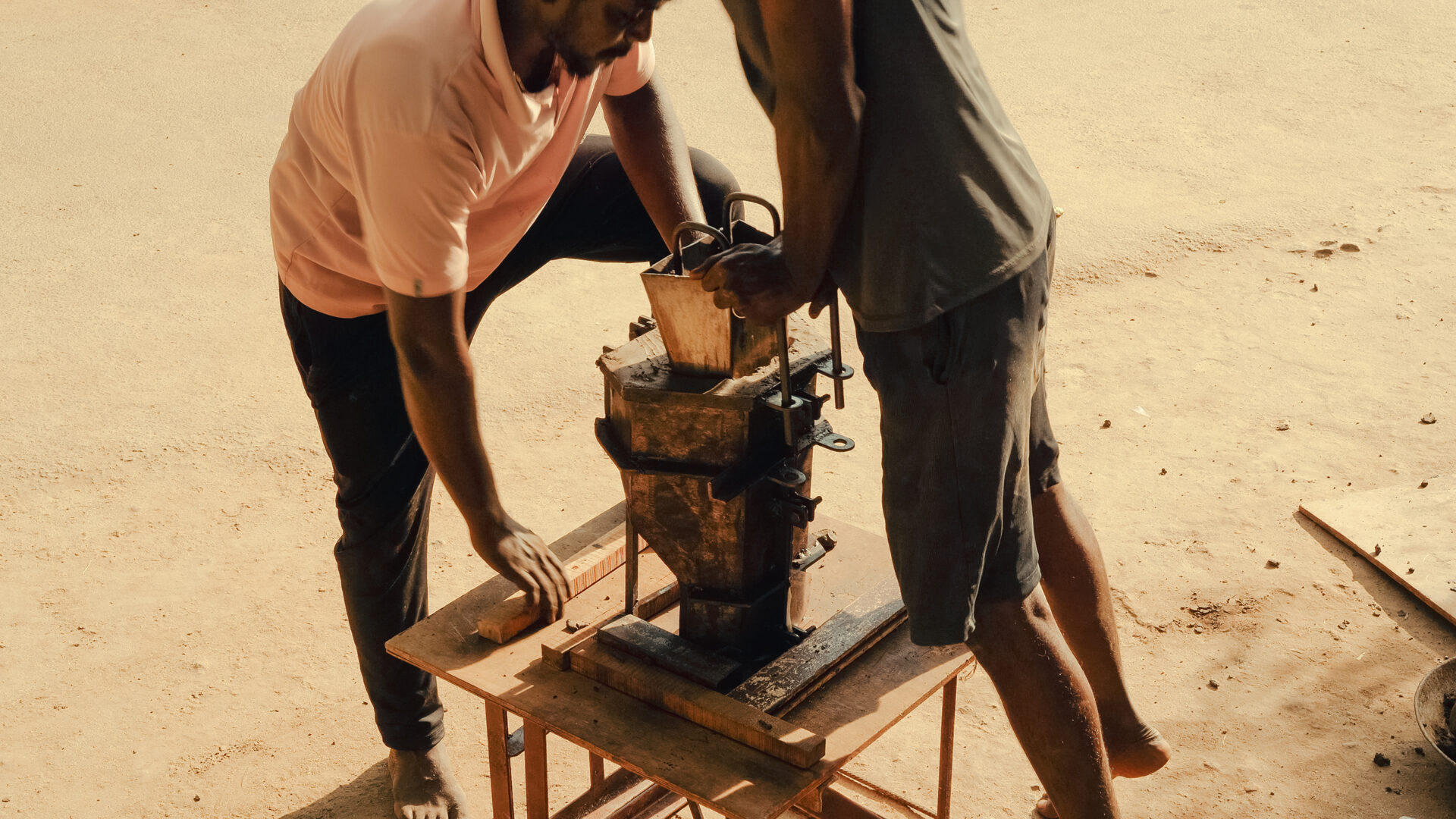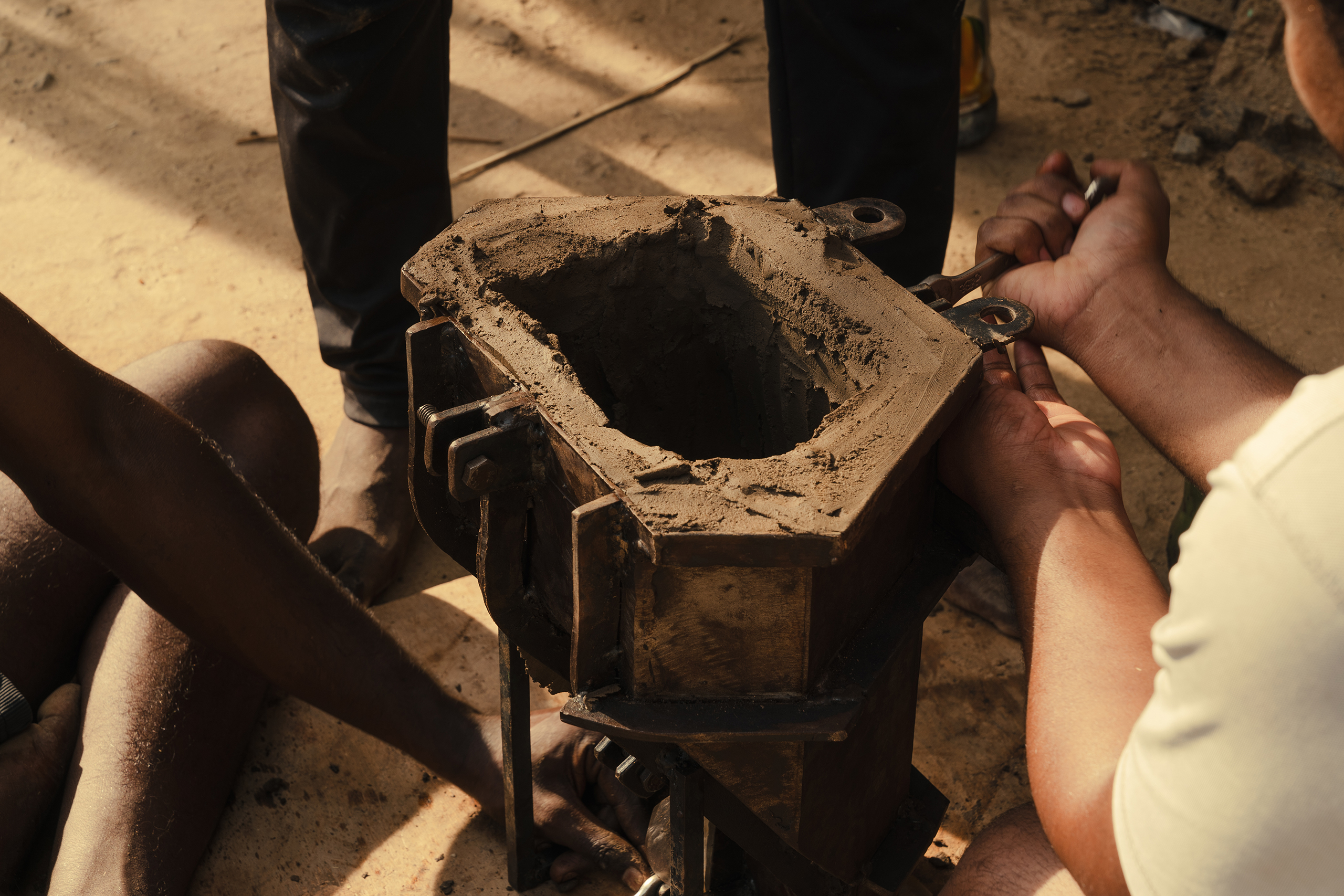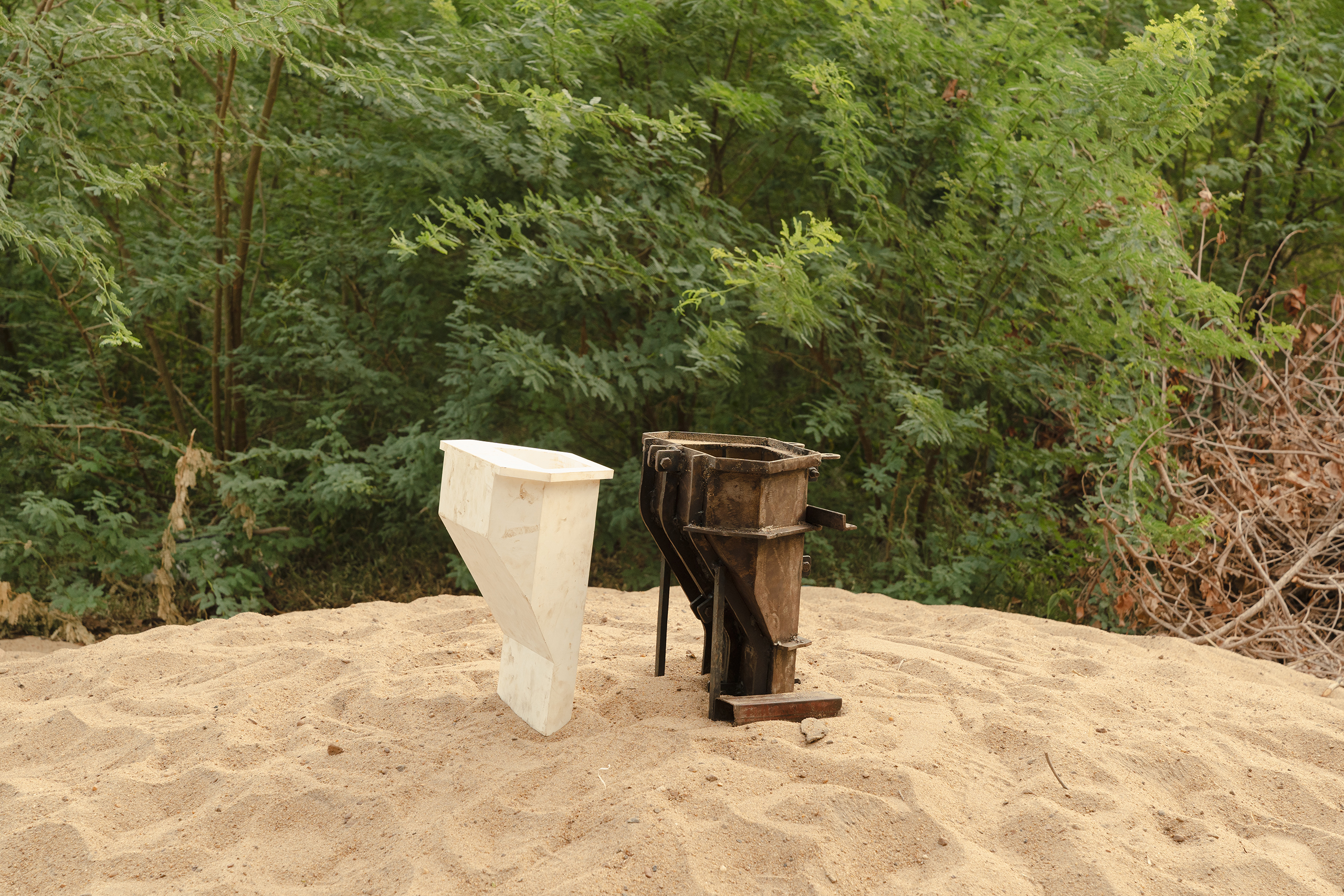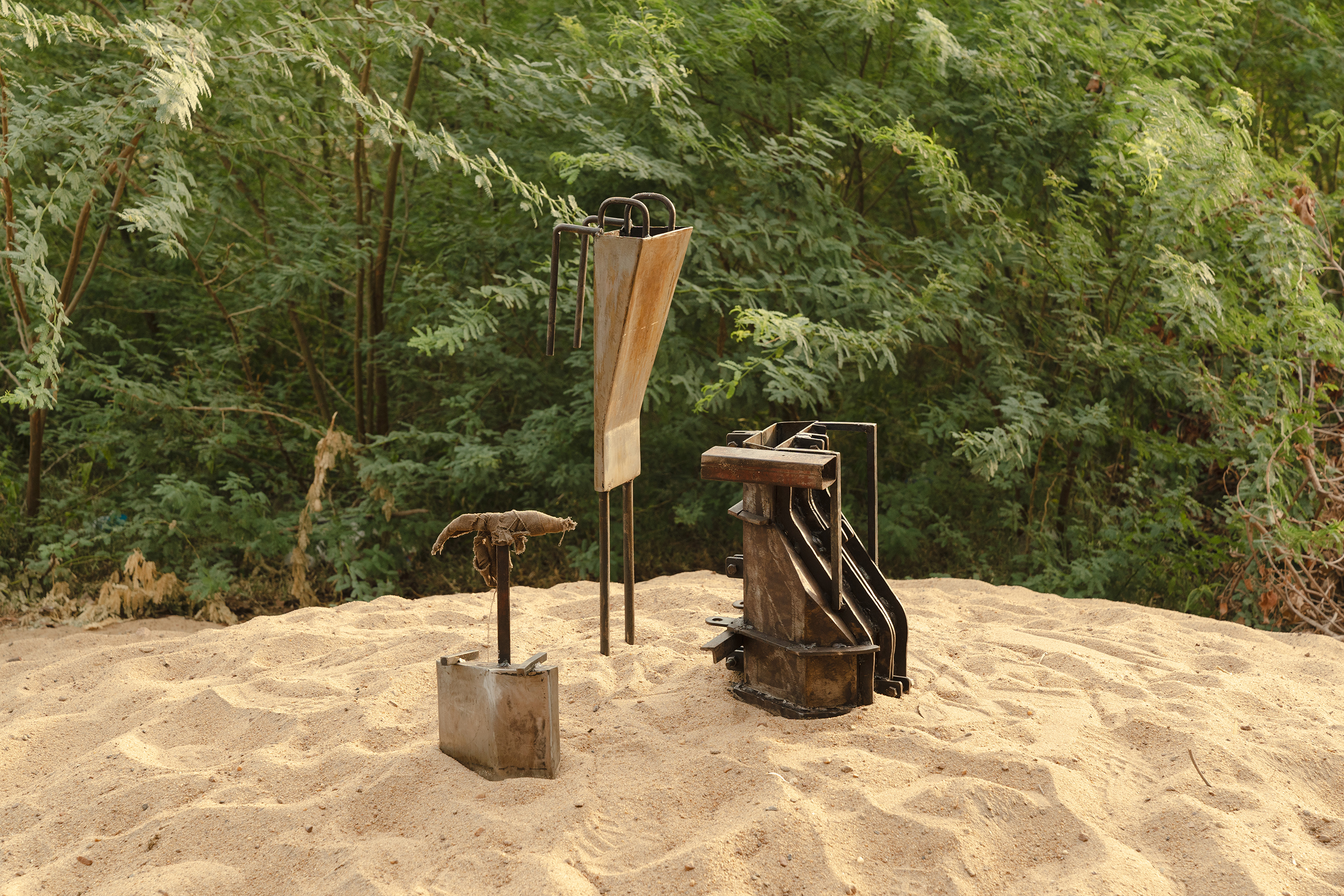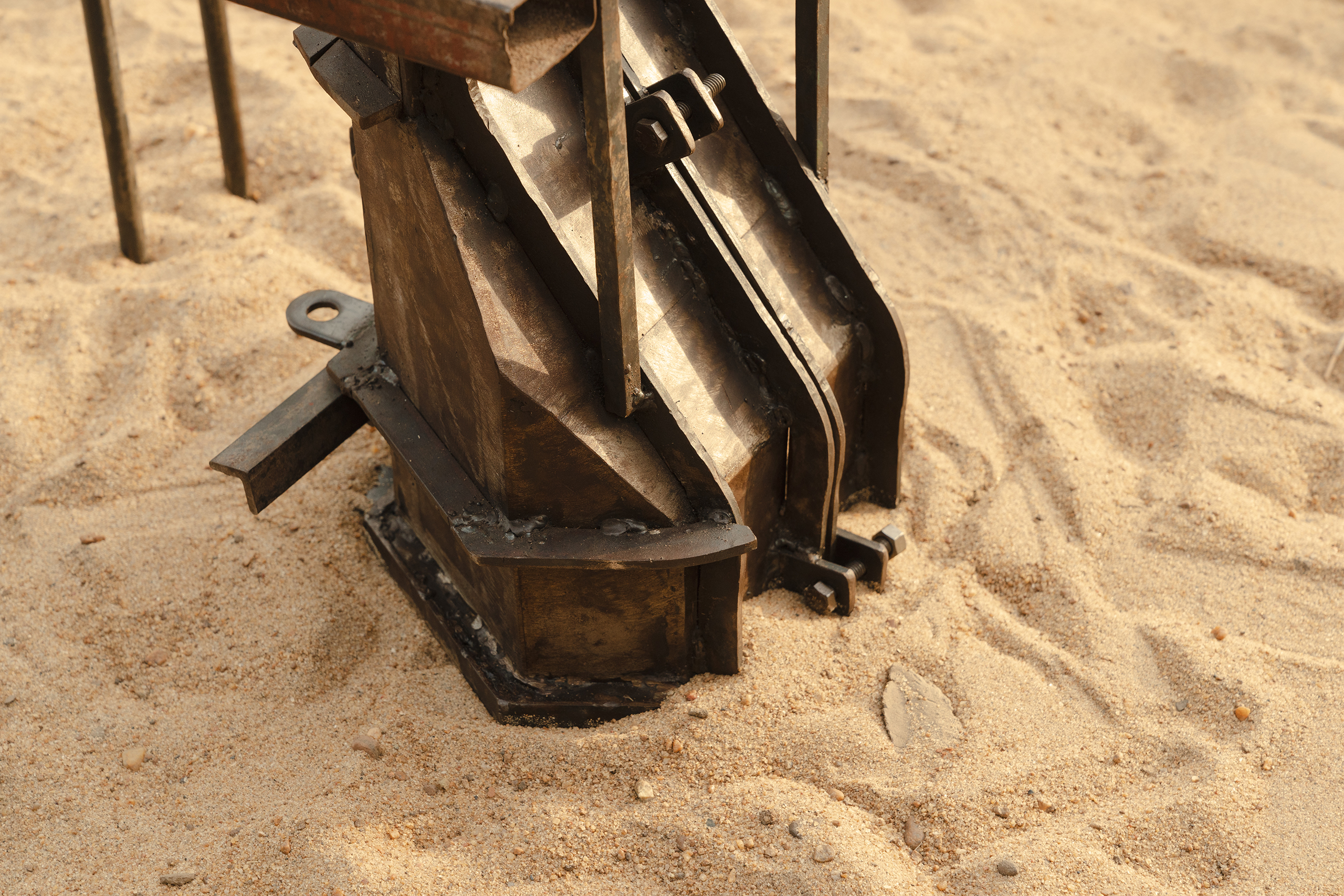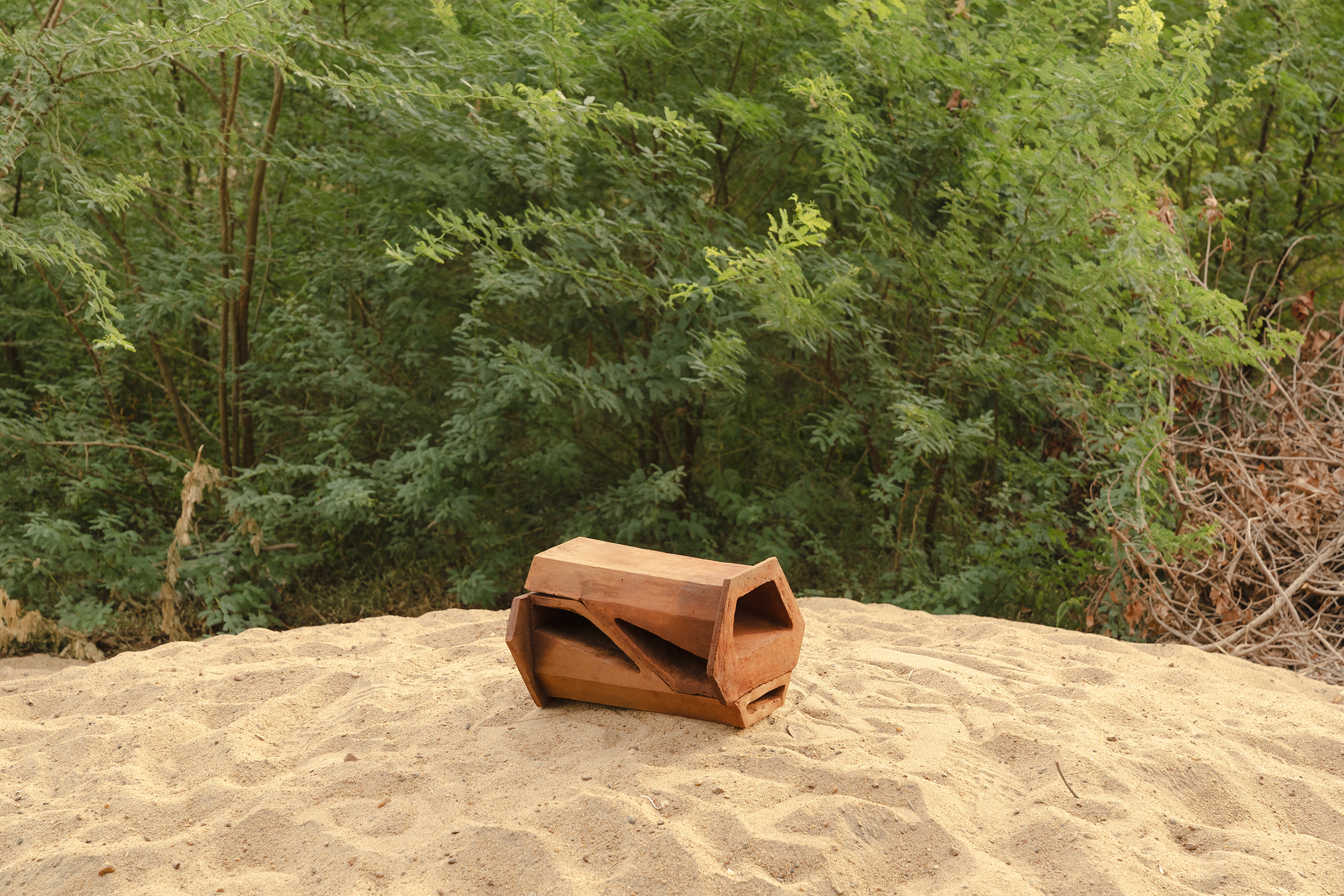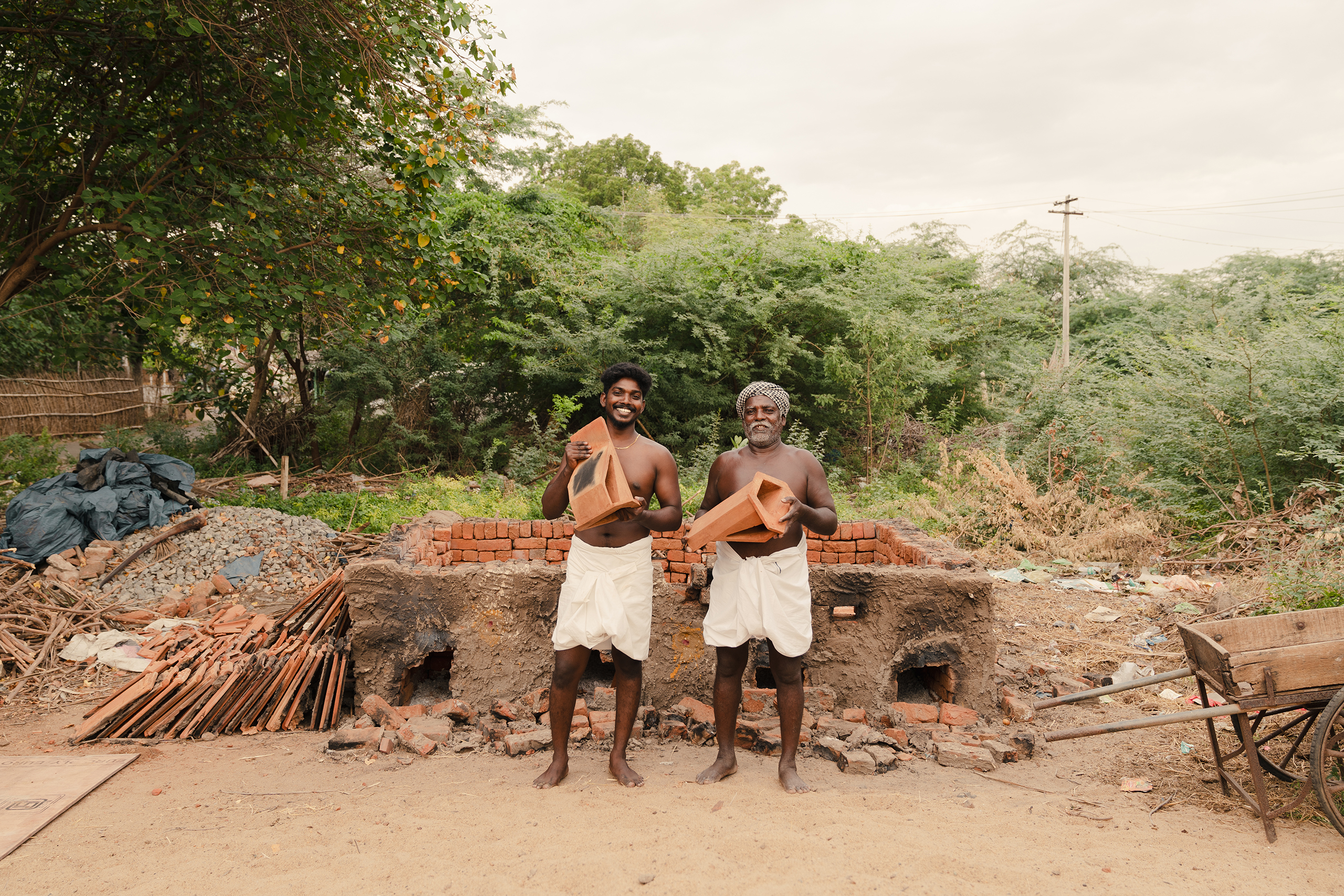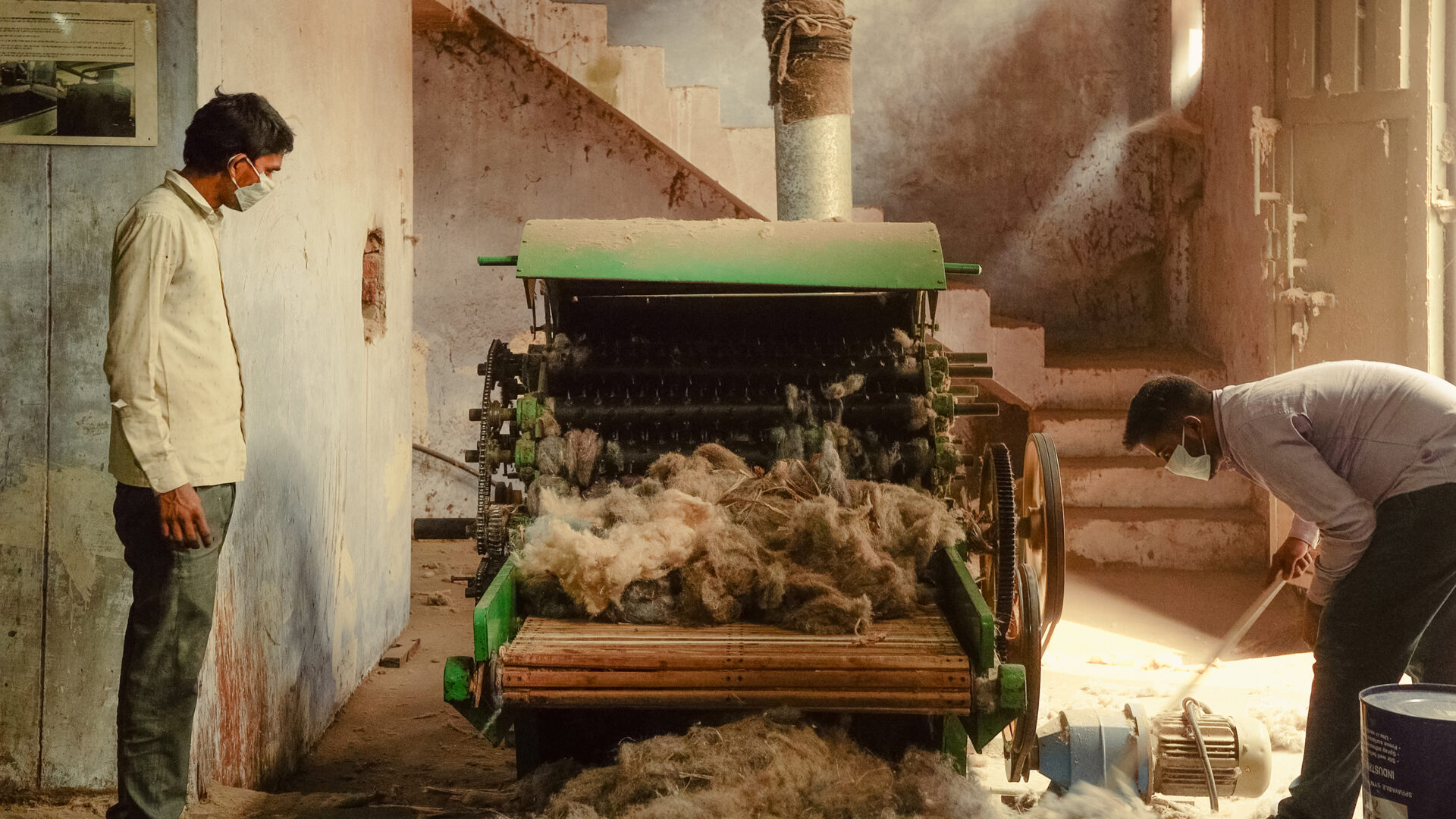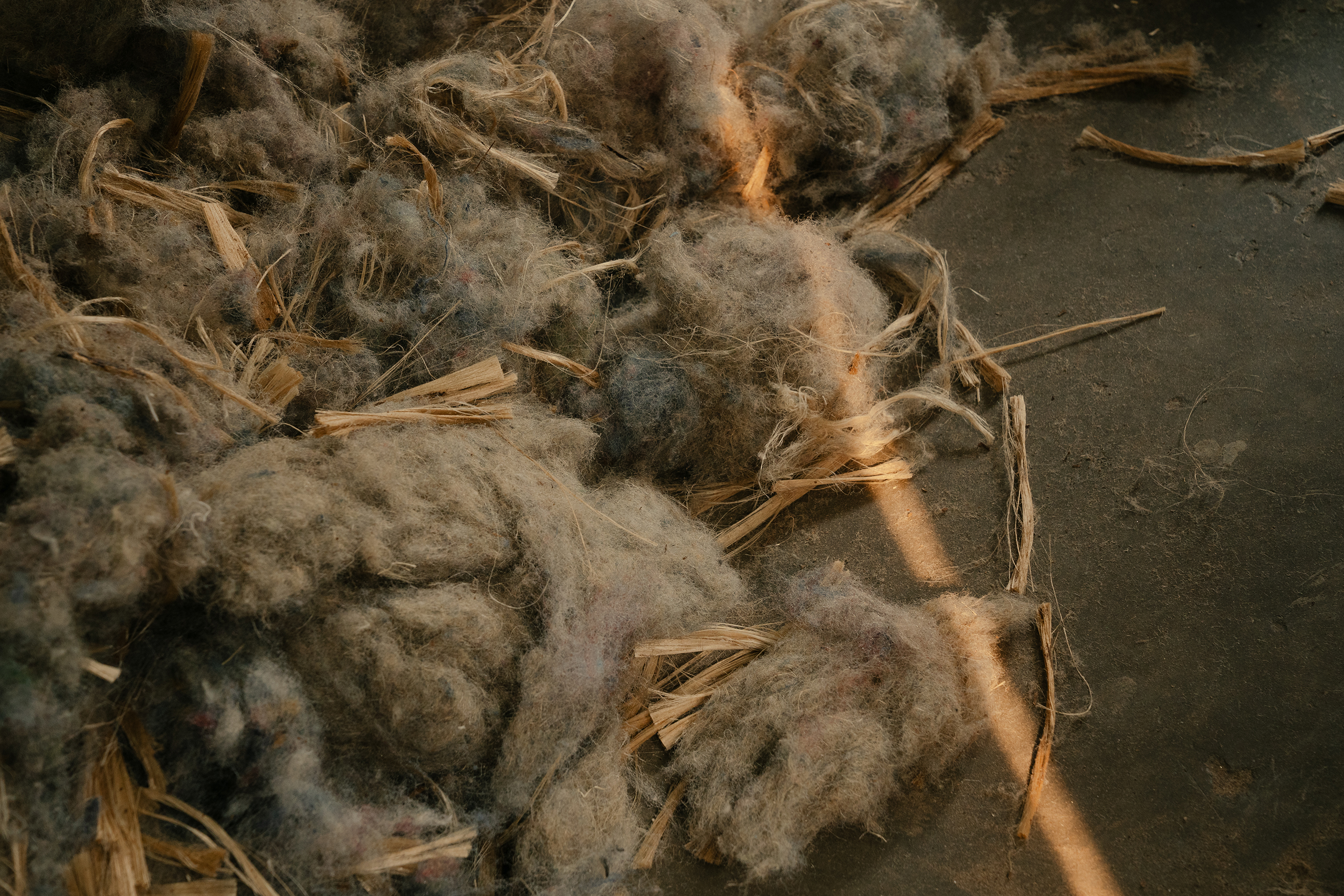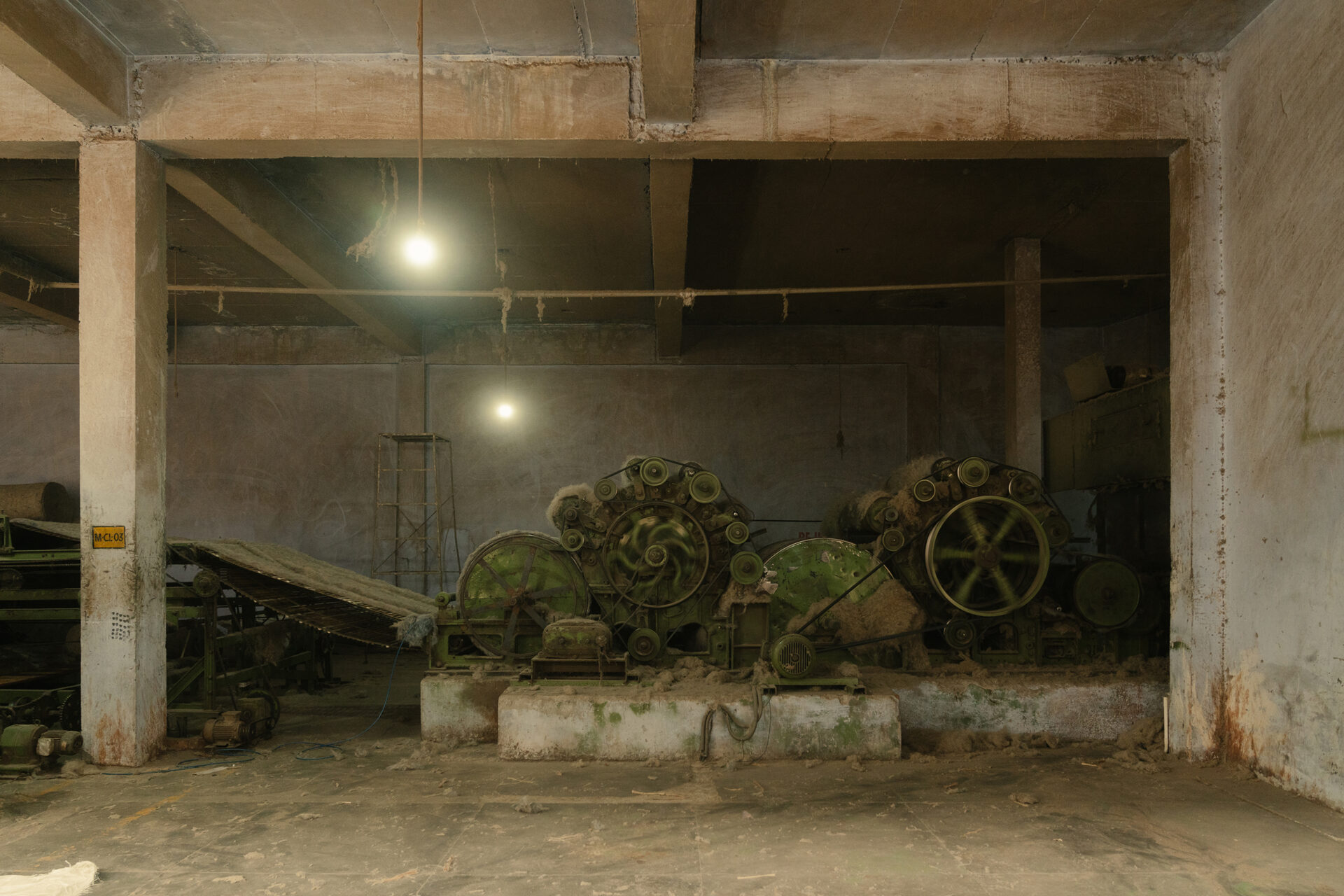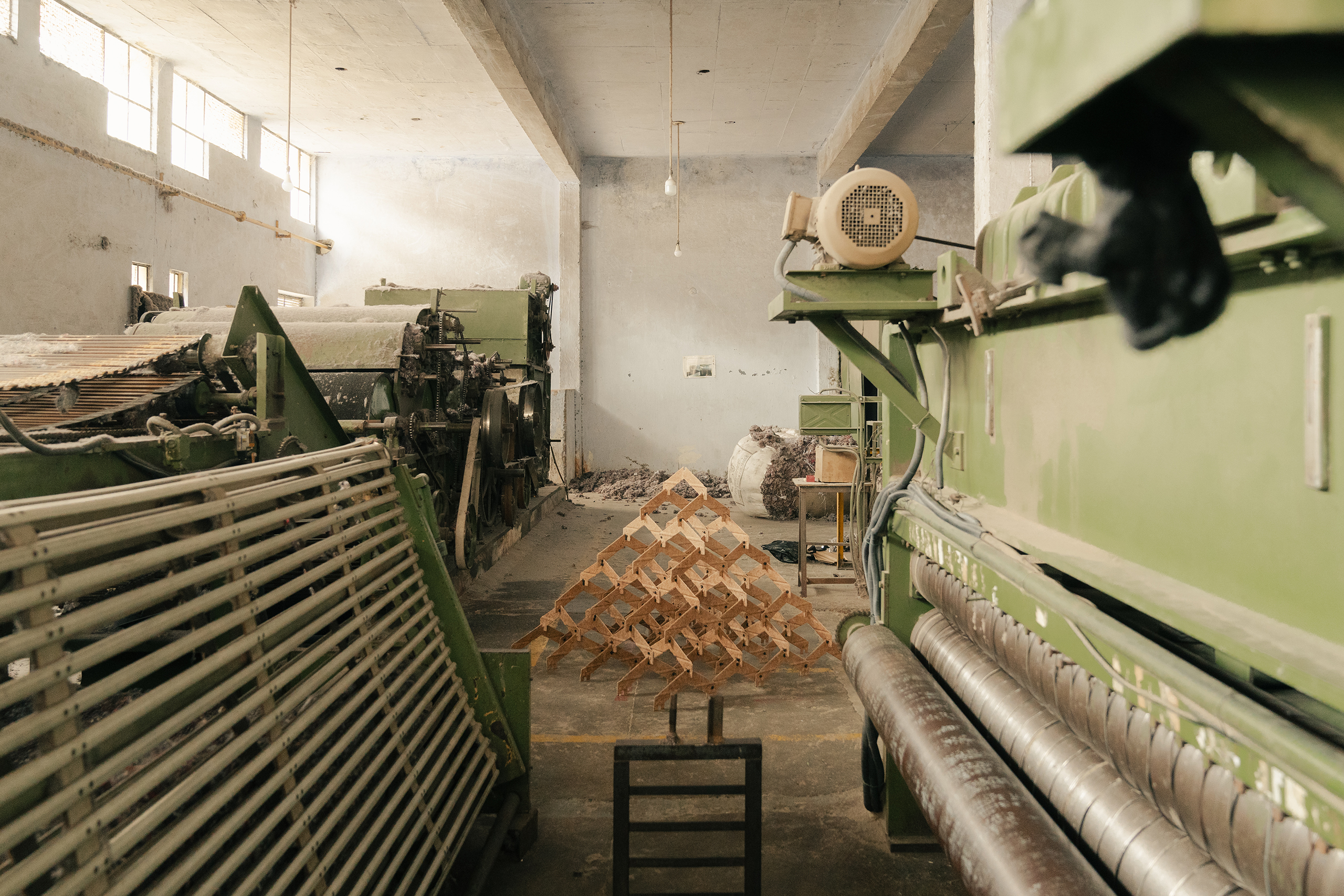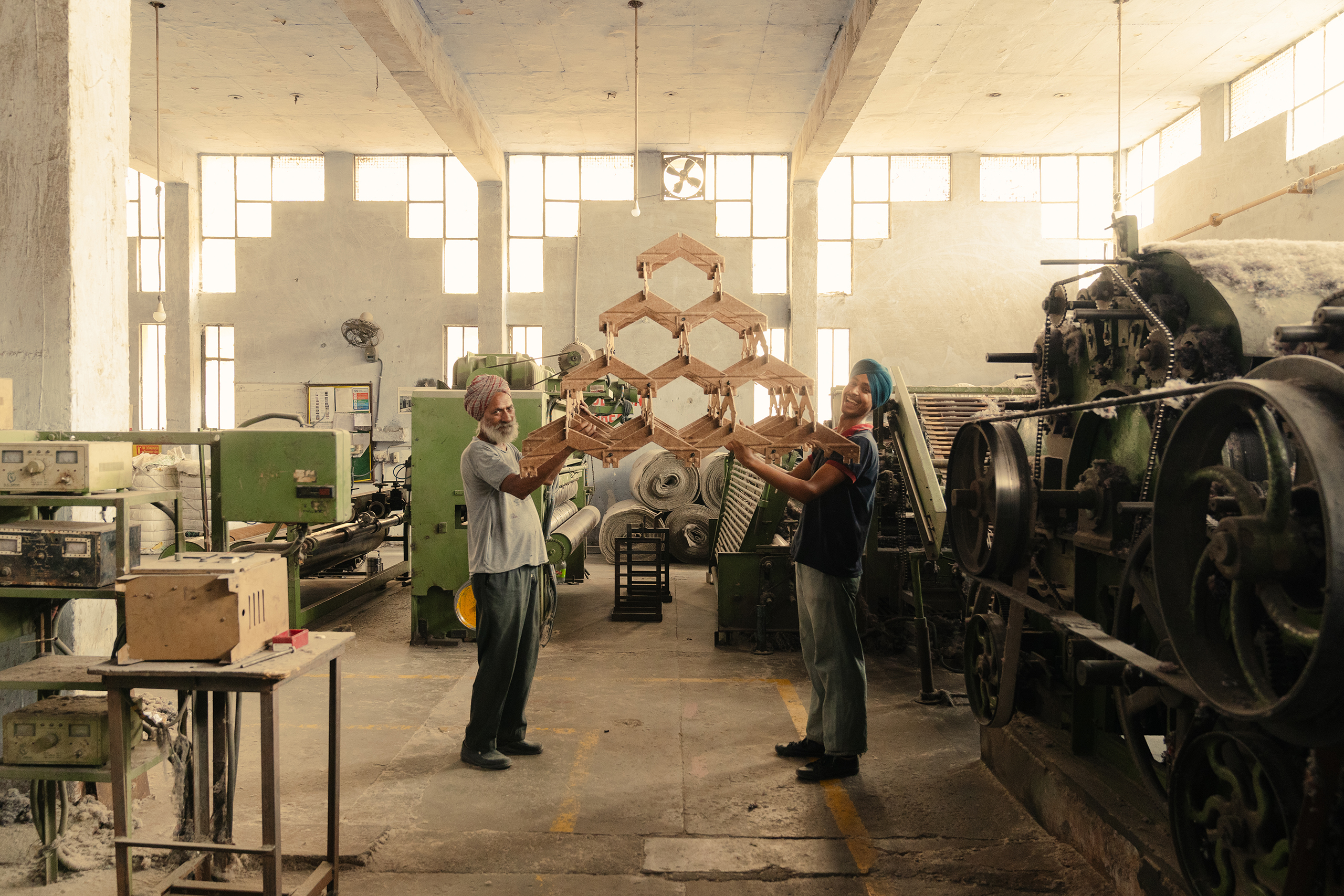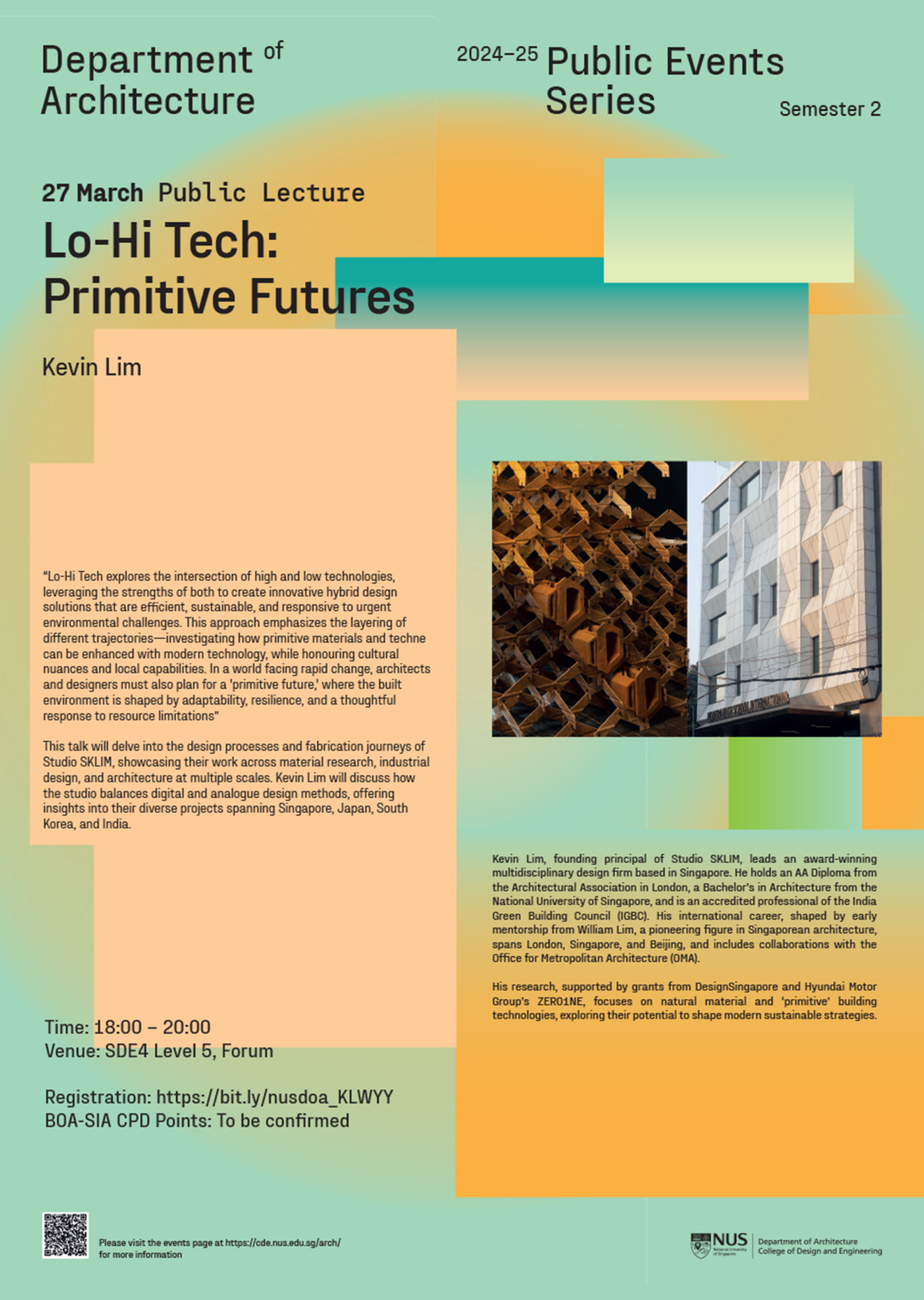Lo-Hi Tech: The New Primitive Hut
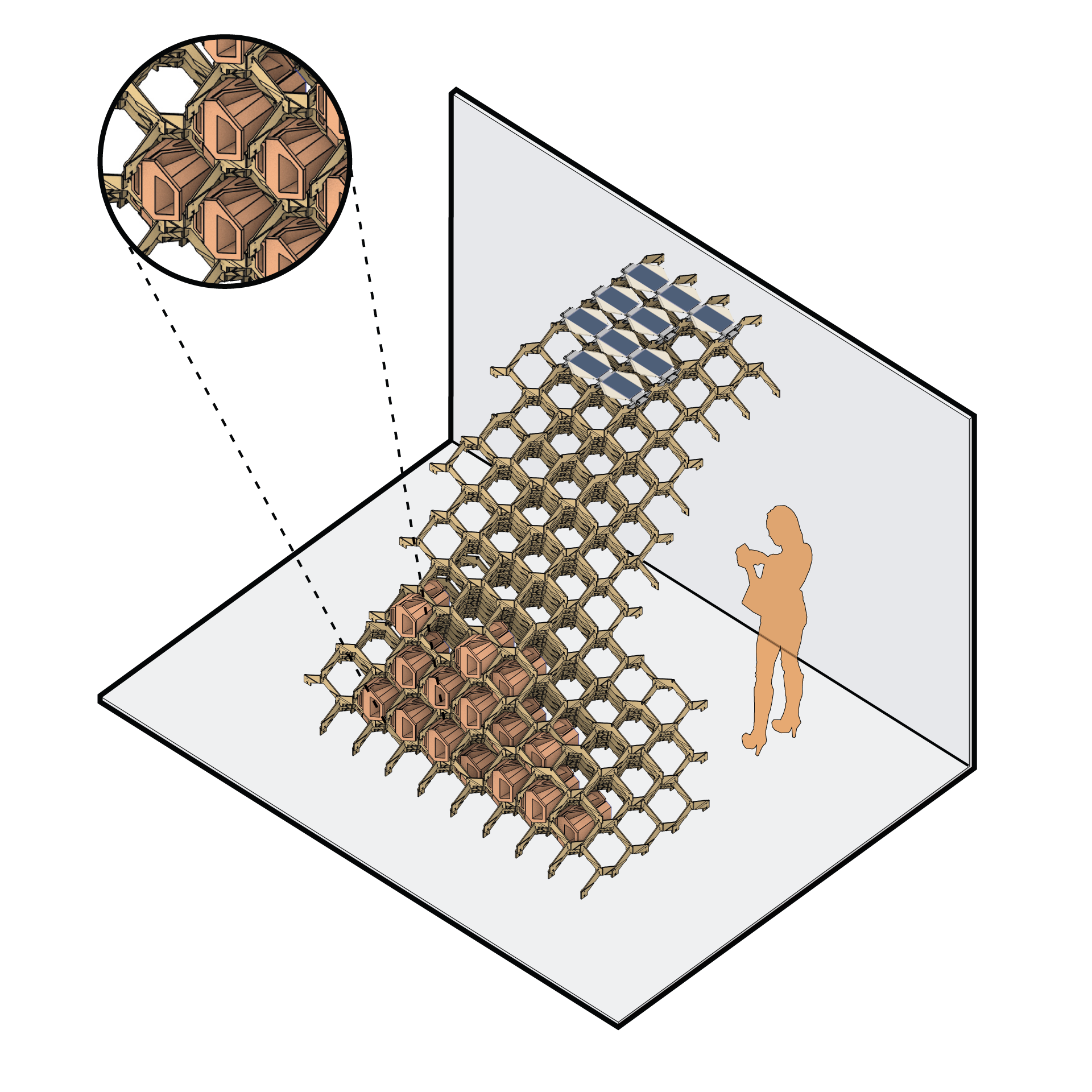
| client | ZER01NE (Hyundai Motor Group) |
| program | Material Research / Exhibition |
| area | 30m² (Indoor Exhibition) 3m² (Outdoor Exhibition) |
| status | Completed |
| team members | Kevin Lim, Ashwin Bafna |
| collaborators | Production & Fabrication Livingstan A (Ceramics Lead) Anantharaj P (Ceramics Team) Jelin Mery A (Ceramics Team) Sivagnanam V (Ceramics Team) Sakthivel S (Ceramics Team) Thomash S (Ceramics Team) Shanmugam A (Ceramics Team) Kedil A (Ceramics Team) Keplin A (Ceramics Team) Hari R (Ceramics Team) Boobalan M (Ceramics Team) Magesh X (Ceramics Team) Nimosan M (Ceramics Team) Ankit S (Jute & Kenaf Biocomposite Fabrication) Arun Singavi (Solar Panel Lead) Dyes Sodhani Biotech 3D Ceramic Printing (Bird Bio-Tat) Superstructure |
| photography & film | Chan Hao Ong |
| creative direction | Chan Hao Ong Kevin Lim |
| language translation, copy editing & proofreading | Ashwin Bafna Yoonjae Lee Kevin Lim |
| associate sponsor | DesignSingapore |
| year of completion | 2024 |
“Lo-Hi Tech: The New Primitive Hut” redefines spatial architecture through lightweight modular plant biocomposite structures. This project extends our exploration of “Natural Climate Tech” by integrating terracotta and plant fibres to foster sustainable materials, integrated building systems, renewable energy solutions, and biodiversity.
Inspired by architects and philosophers like Viollet-le-Duc, Laugier, and Vitruvius, who rooted architecture in nature, this project poses a speculative question: How can the evolution of the “primitive hut” integrate more deeply with nature and modern technology to tackle future climate challenges?
This research emphasizes using naturally modified materials to create sustainable shelters that generate clean energy. The shelter not only addresses possible solutions to the climate crisis but also re-evaluates humanity’s connection to the environment, demonstrating how low-tech materials can perform effectively alongside modern technology.
Studio SKLIM aims to position “Natural Climate Tech” as essential for innovative architectural systems, contributing to the broader goal of net-zero shelter solutions. This research adopts a dual approach of “Learning from Nature” and “Modifying Nature,” focusing on natural systems and material adaptation to enhance performance.
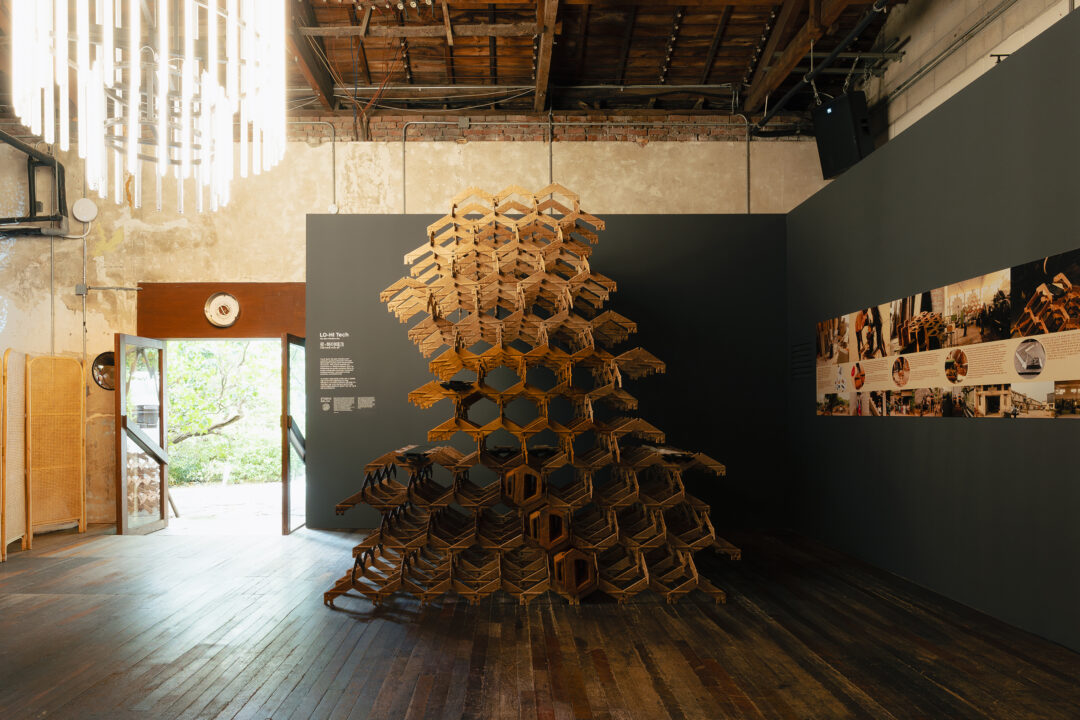
The architectural installation features a lightweight lattice made from Jute fibre biocomposite, designed for modular installation and localised repair. The method of stacking modular components is inspired by the timber bracket connections found in Korean traditional Hanok structures and other similar timber constructions in the region. The Jute fibre biocomposite frameworks are also dyed in organic dyes made from plant extracts. The Terracotta infills facilitate passive cooling through natural airflow and water evaporation, complemented by integrated solar panels on Kenaf biocomposite tiles, creating a roof system that generates clean energy. The water receptacles also function as planting beds to encourage biodiversity.
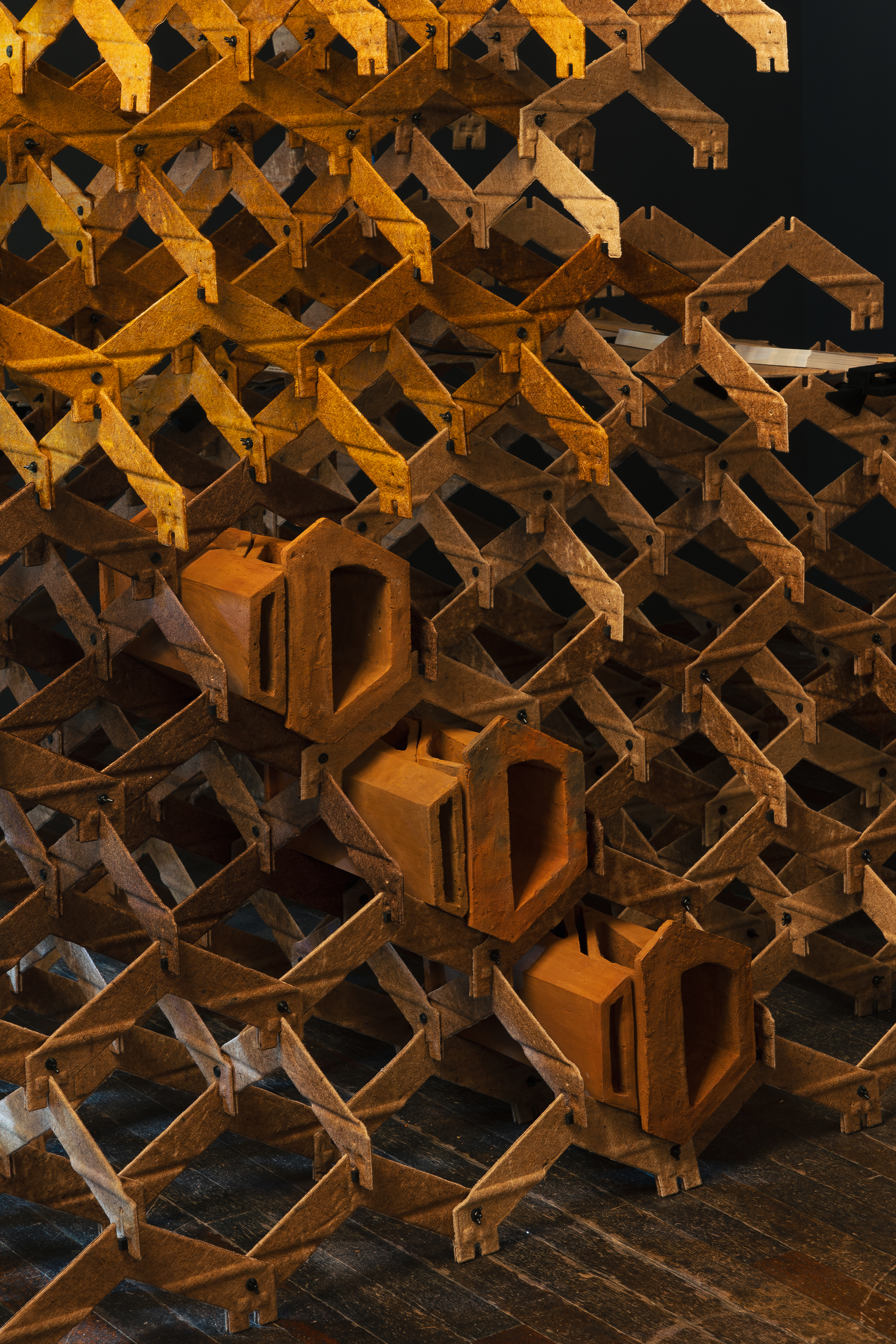
Additionally, we aim to explore biodiversity habitats, or “Bio-Tats,” which introduce animal habitats (bird-tats) that align with the principles of Lo-Hi Tech.
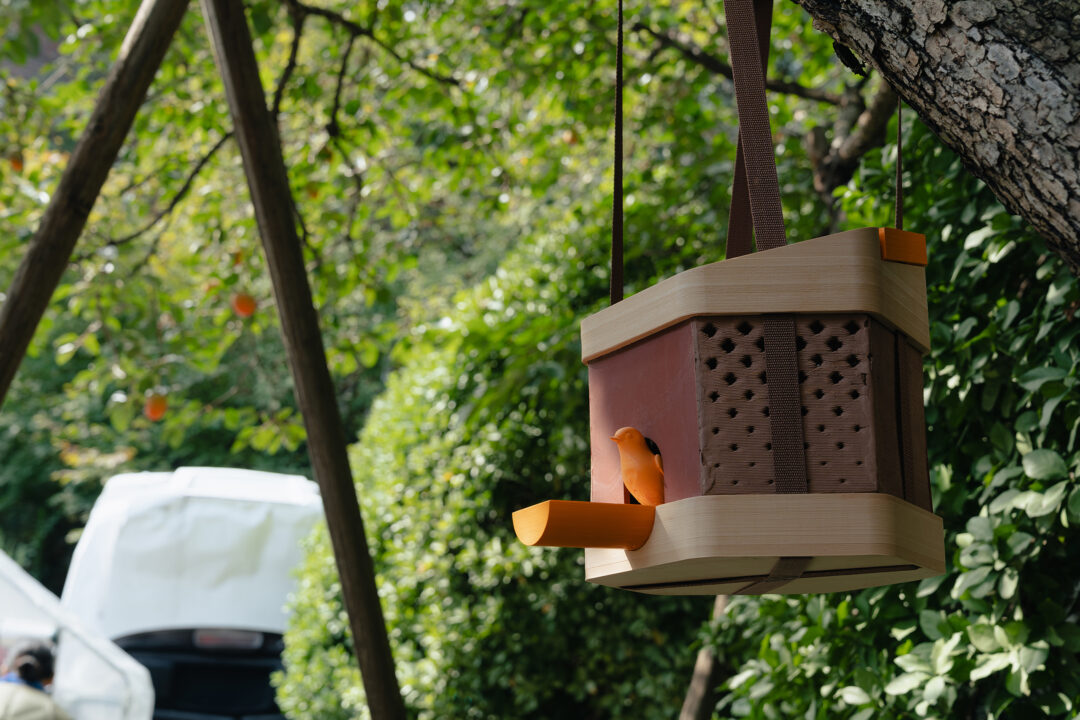
“Lo-Hi Tech: The New Primitive Hut,” the second in this research series, expands its scope from material research to include interconnected systems. Our research covers three building material systems:
- Ju-Frame Structure (JFS) – Jute Fibre Biocomposite Lightweight Structures
- Ke-Sol System (KSS) – Kenaf Fibre Biocomposite and Solar Panel System
- Terra-Cool System 2 (TCS2) – Terracotta with Evaporative Cooling, Water + Sand Filter System/Plant Beds
Exhibition Concept
Our experiential exhibition aims to showcase the various ways plant fibres such as Jute and Kenaf, and terracotta can be used to create integrated building systems in forms such as lightweight structures, cladding surfaces, solar panel roofing, and even habitats that promote biodiversity.
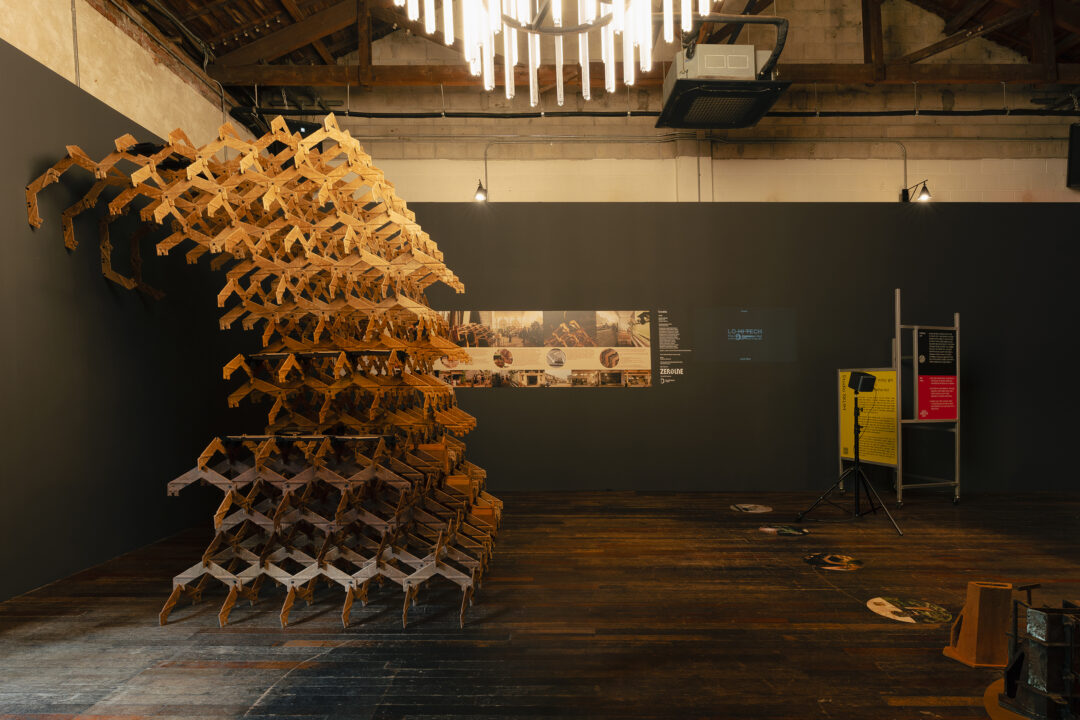
The exhibition consists of the following components:
- Main installation: A half-arch structure made up of 800 modular Jute biocomposite pieces. This setup also incorporates existing KSS solar panels and empty shells, which are repurposed as shelving units. These components are attached to the new lattice structure using 3D-printed bridge elements. Inserts of new terracotta cooling units (TCS2) are further integrated into the lattice framework.
- Bio-tat for birds: Constructed using KSS tiles, a 3D printed PLA framework, and 3D-printed ceramic wall panels.
